MCAT ORGO CHEM!!!
1/193
Earn XP
Description and Tags
TIME...TO DIE
Name | Mastery | Learn | Test | Matching | Spaced |
|---|
No study sessions yet.
194 Terms
Heteroatoms
-atoms that are not carbon or hydrogen.
-O,N,P, or halogens
Steps for naming compounds
1. Identify the Longest Carbon Chain Containing the Highest-Order Functional Group. If there are two or more chains of equal length, the more substituted chain gets priority as the parent chain.
2. Number the Chain (with 1 nearest the highest priority functional group). If the functional groups have the same priority, the numbers of the substituted carbons should be minimized. This is the same for rings and straight chains.
3. Name the Substituents. Only the highest priority functional group determines the suffix and must be part of the parent chain
4. Assign a Number to Each Substituent. (and also di-, tri-, etc.)
5. Complete the Name. Substituents are named in alphabetical order. Prefixes like di, tri, tetra, n (straight chain), and tert are ignored for alphabetizing. But nonhyphenated roots that are part of the name are included (neo, iso, cyclo).
oxidation state
- increases with more bonds to heteroatoms
- decreases with more bonds hydrogen
sec-butyl
carbon bound to R group bound to two other carbons
Tert butyl if bound to 3
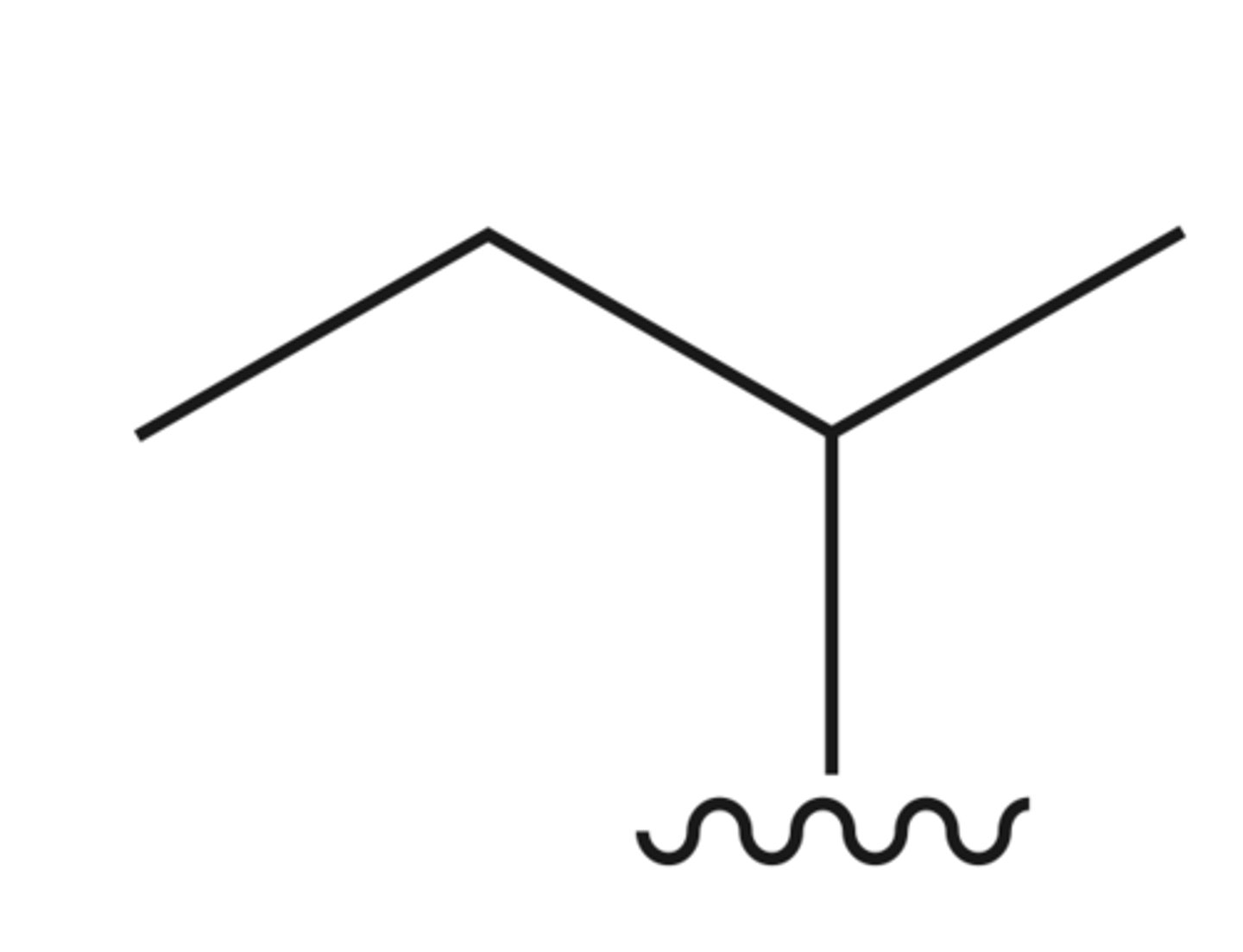
isopropyl
iso if all but one continuous chain
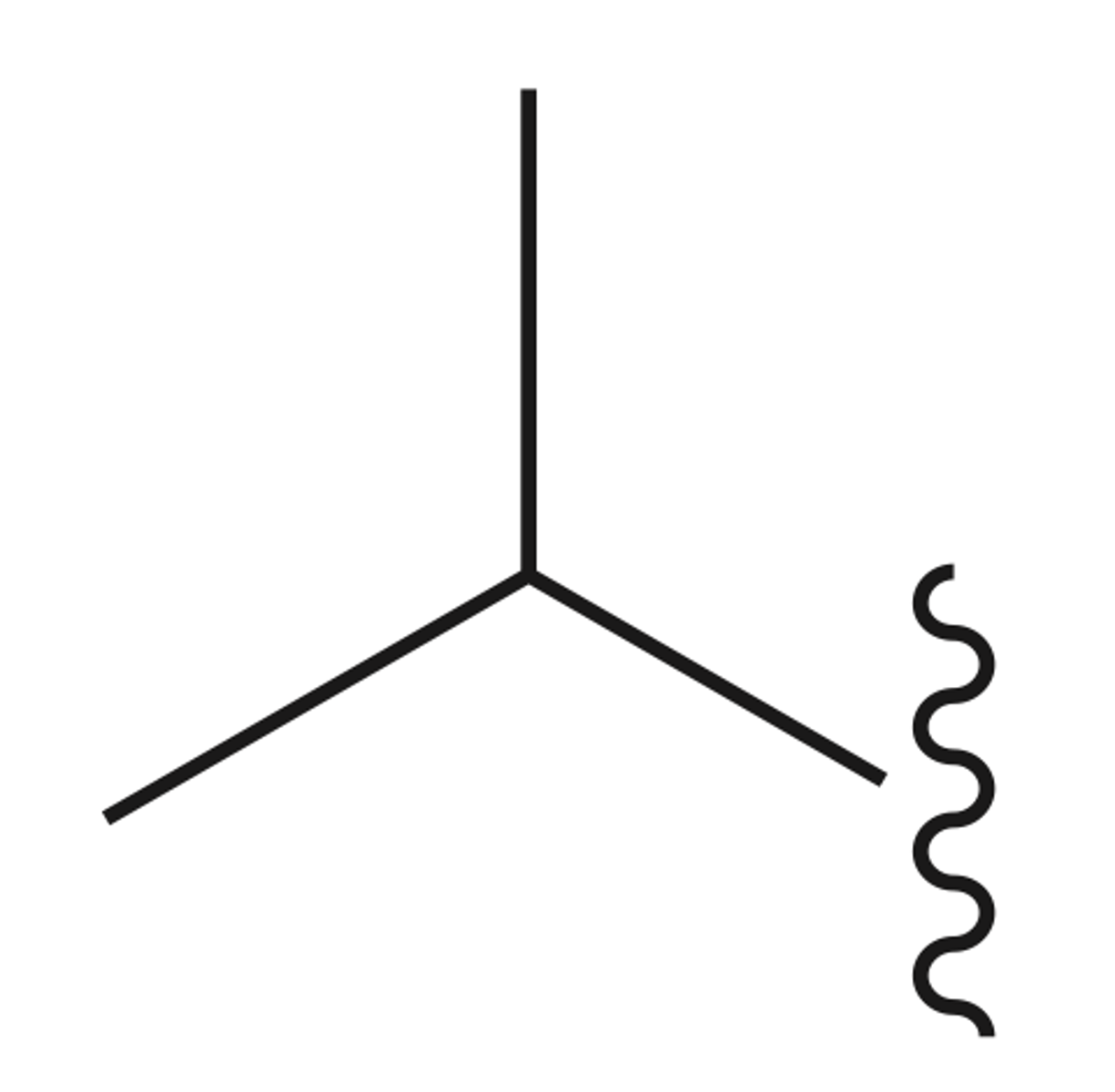
isobutyl
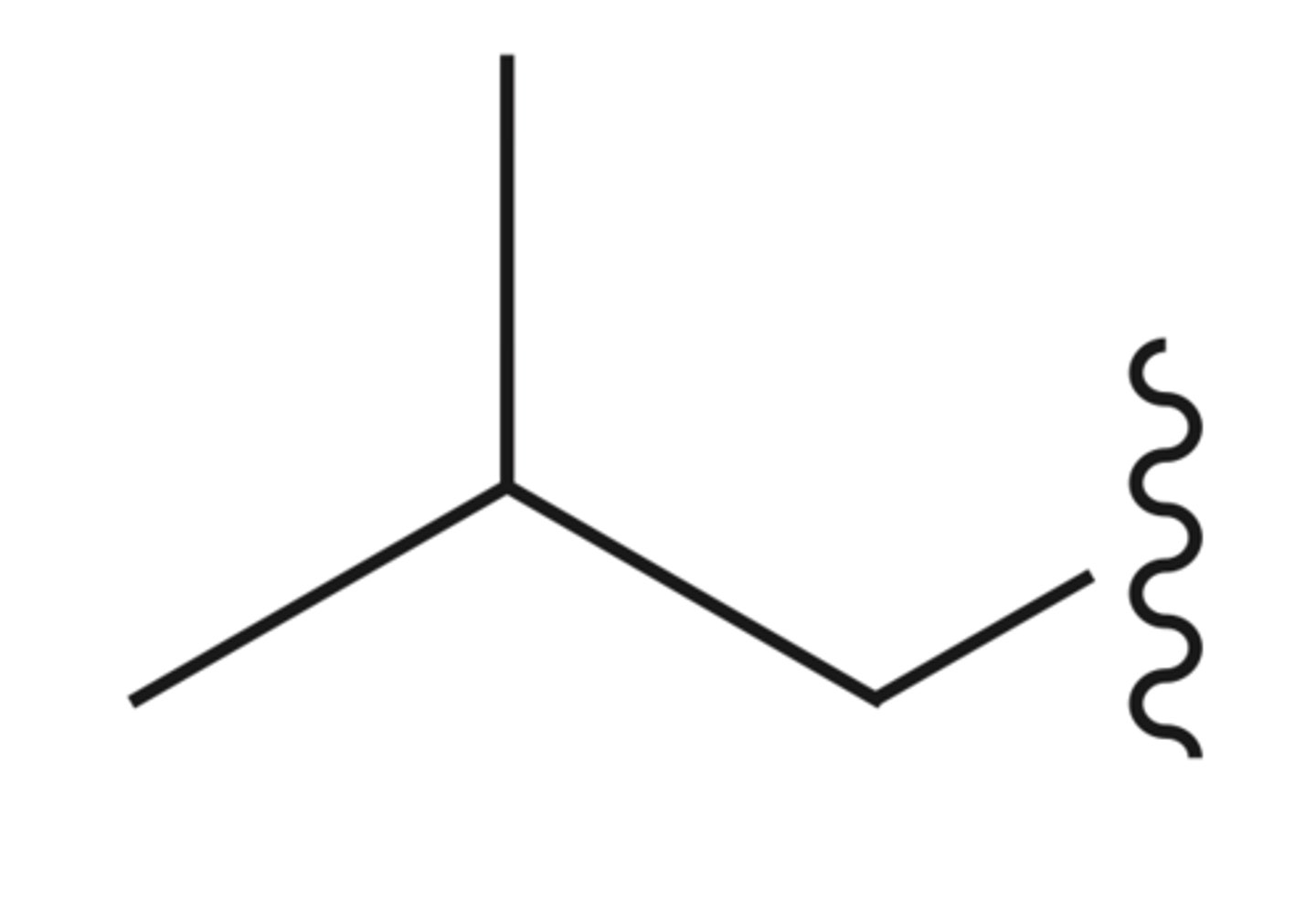
neo-pentyl
continuous chain except two carbons
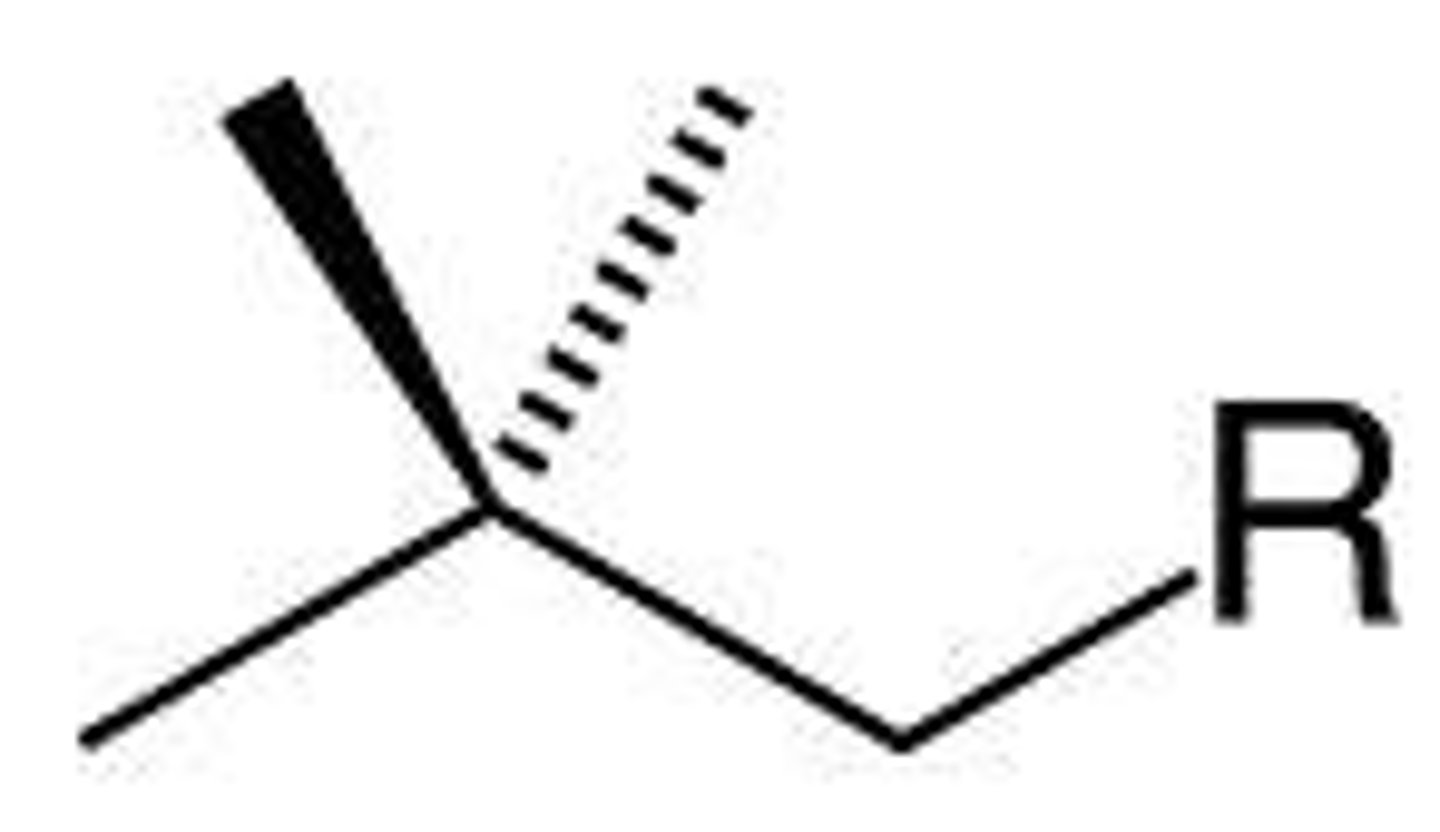
True/False
A double or triple bond is indicated by the lower-numbered carbon involved in the bond. Double bonds are also higher priority than triple bonds.
-Diols
-alcohols with 2 hydroxyl groups - also called glycols
/
undec, dodec
/
Alcohols take precedence ex. hept-6-en-1-ol (has double bond as well). If not highest priority, hydroxy added to start. if no double bonds, put number before longest chain name. (2-propanol)
/
common names just end with -alcohol
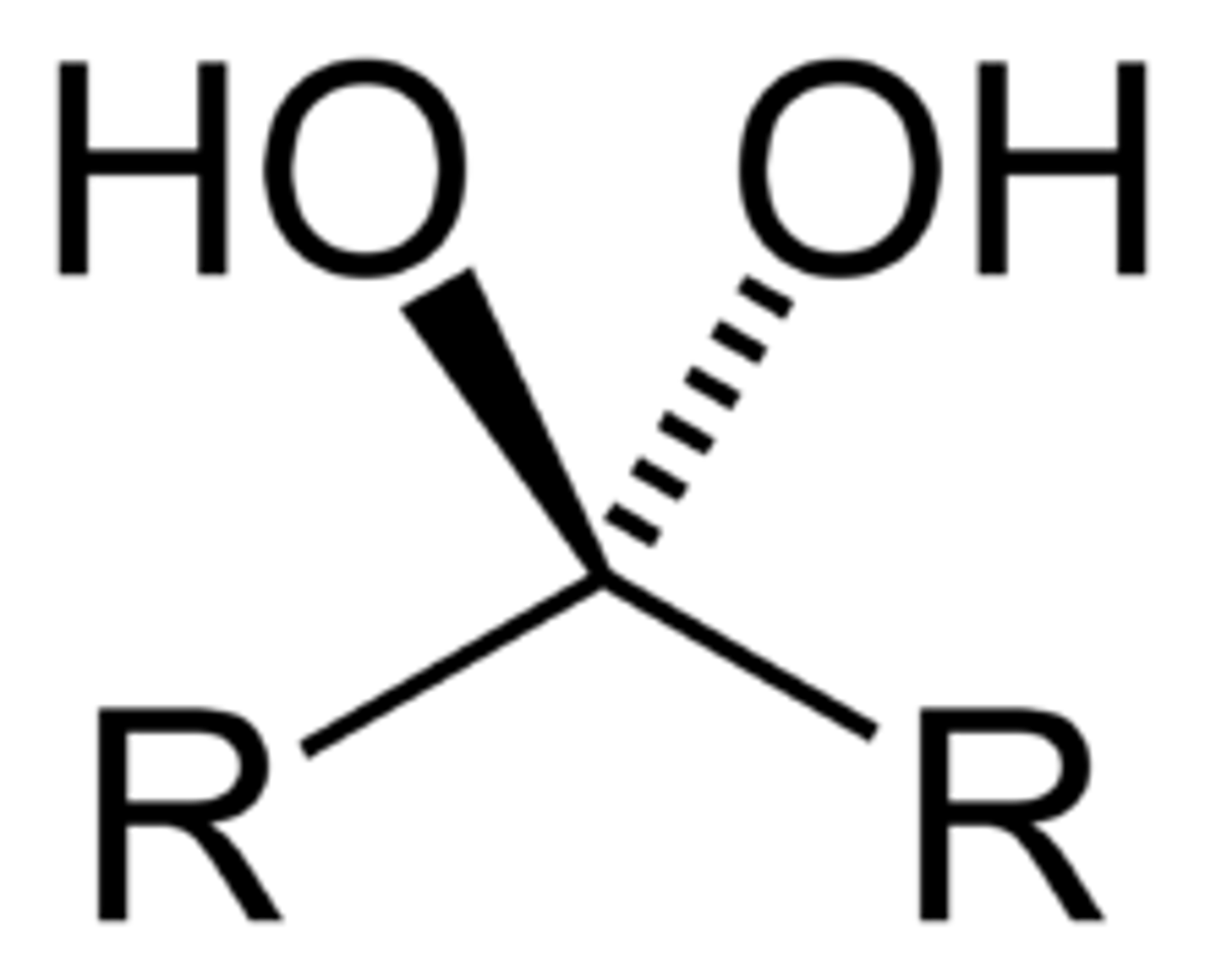
geminal diols
-diols with hydroxyl groups on the same carbon
-also called hydrates
-spontaneously dehydrate to form C=O group
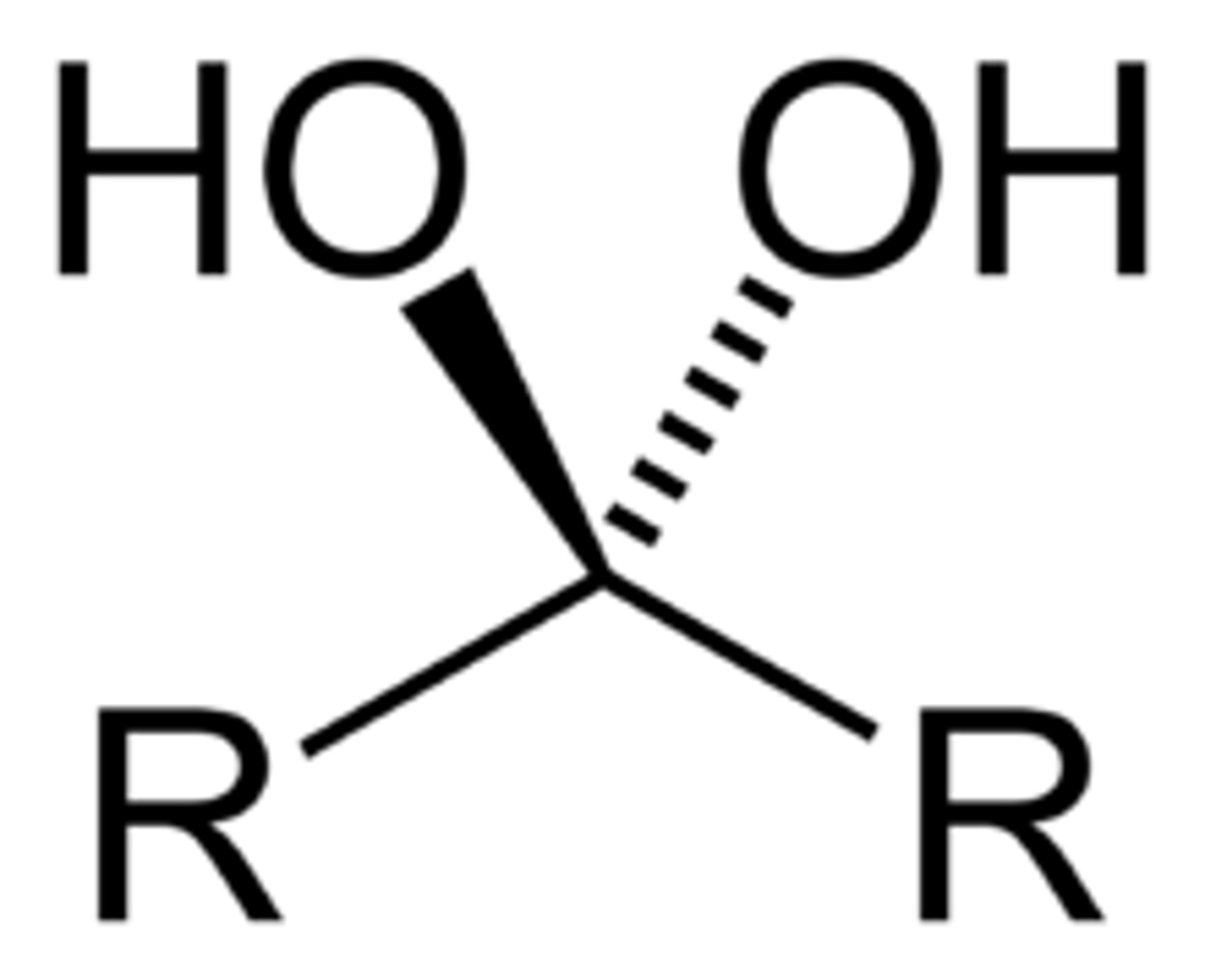
vicinal diols
-diols with hydroxyl groups on adjacent carbons'
.
vincinal in vicinity- geminal like gemini twins
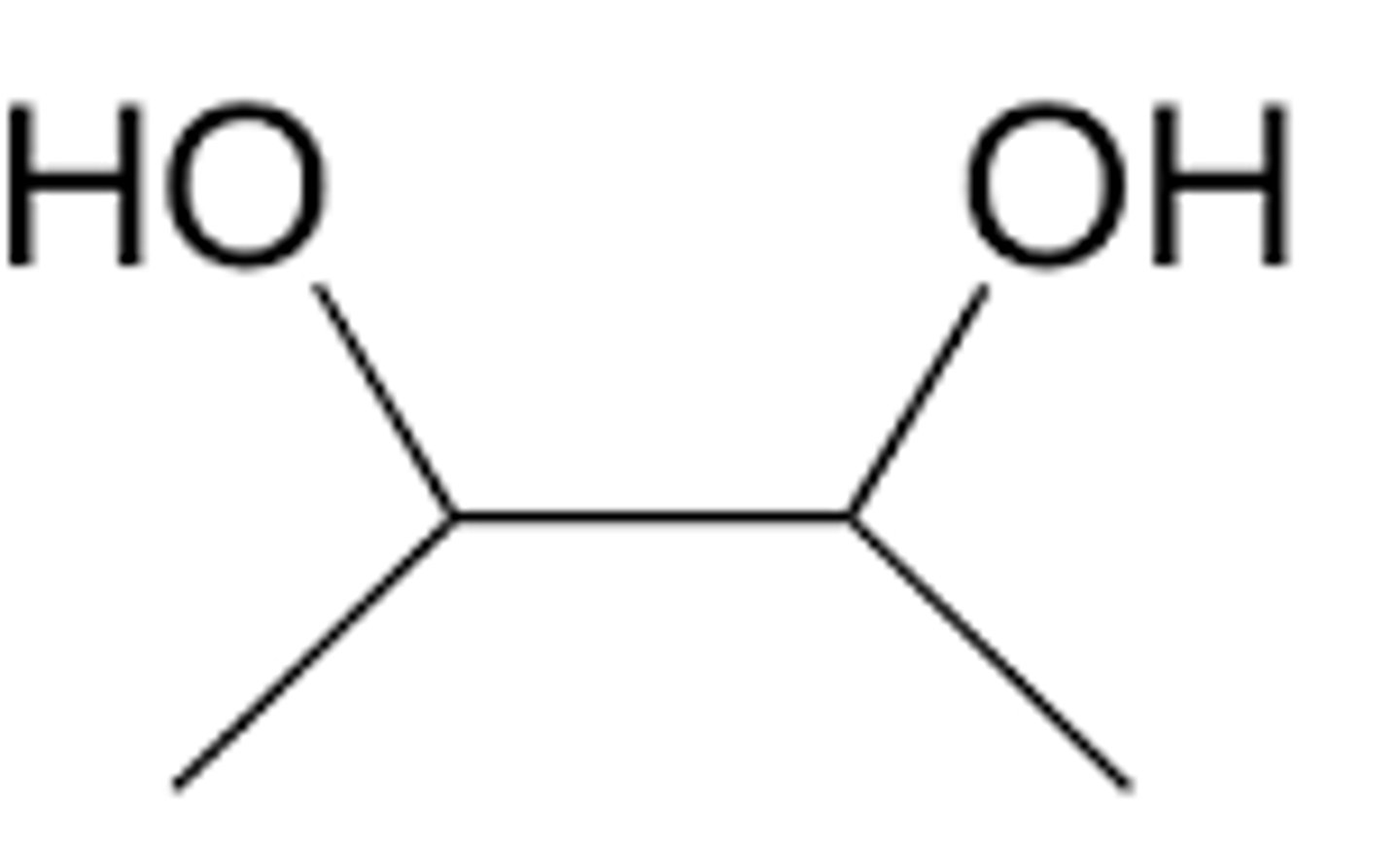
Alcohol naming
- Alcohol common names are created with the name of the alkyl group followed by alcohol. For example, ethanol -> ethyl alcohol and 2-propanol -> isopropyl alcohol.
- Diols are named with the entire hydrocarbon molecule followed by -diol. Ethylene glycol -> ethane-1,2-diol.
- Prefix: hydroxy (can be di-tri, etc hydroxy)
- Suffix: ol
Alkene functional group naming:
- Prefix: alkenyl
- Suffix: ene
- Usually same priority as alkynes, but higher than alkynes in cyclic compounds
Alkyne functional group naming:
- Prefix: alkynyl
- Suffix: yne
Alkane naming:
- Prefix: alkyl
- Suffix: ane
Aldoses and ketoses
aldehydes are chain terminating. Ketones have no leaving groups.
Aldehyde naming:
- Prefix: oxo
- Suffix: al (replace - e at end)
Ketone naming:
- Prefix: oxo or keto (again if lower priority than other group)
- Suffix: one (replace - e at end)
but-3-en-2-one
prefix before parent
Formaldehyde (common name)
methanal
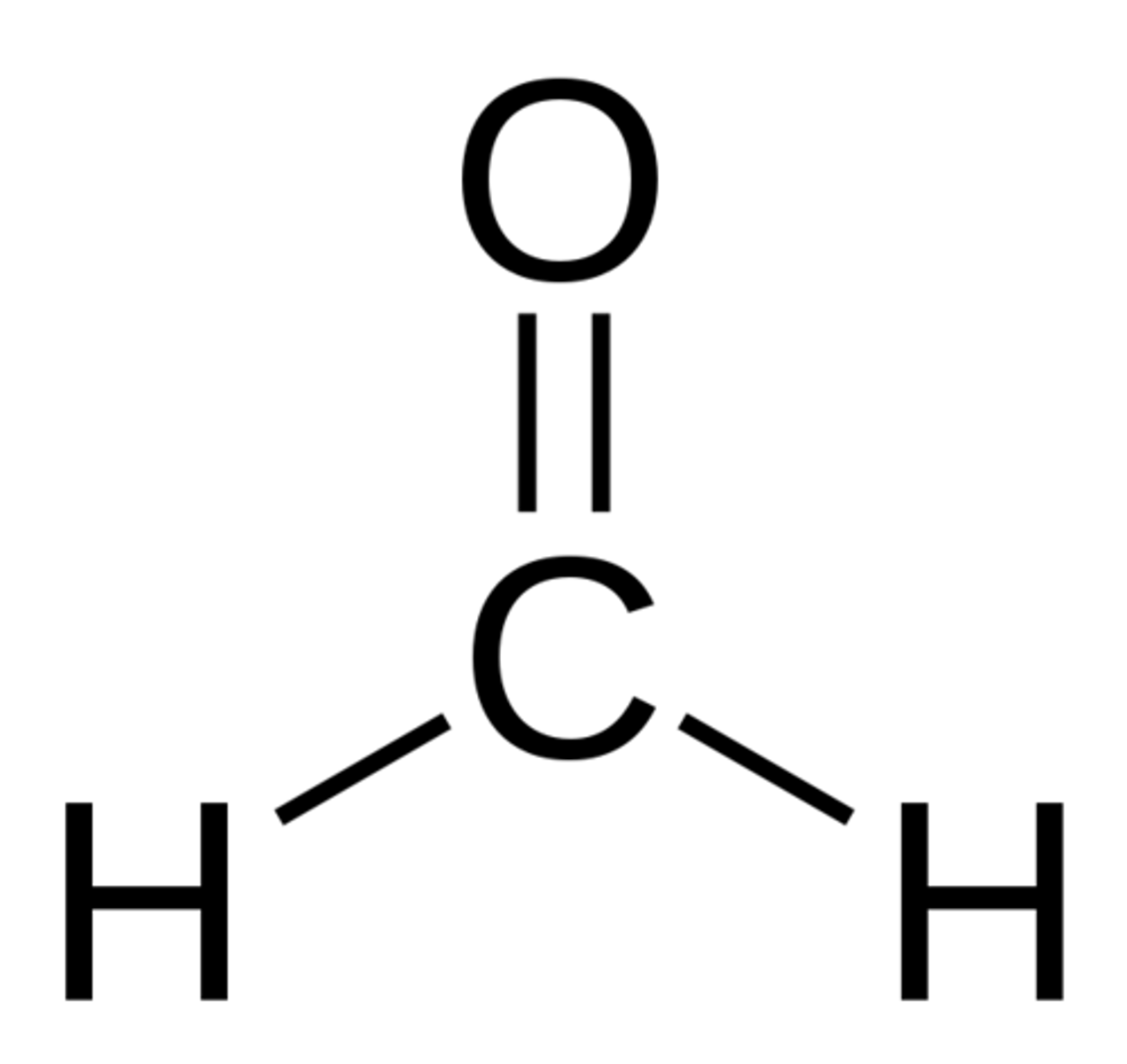
acetaldehyde (common name)
ethanal
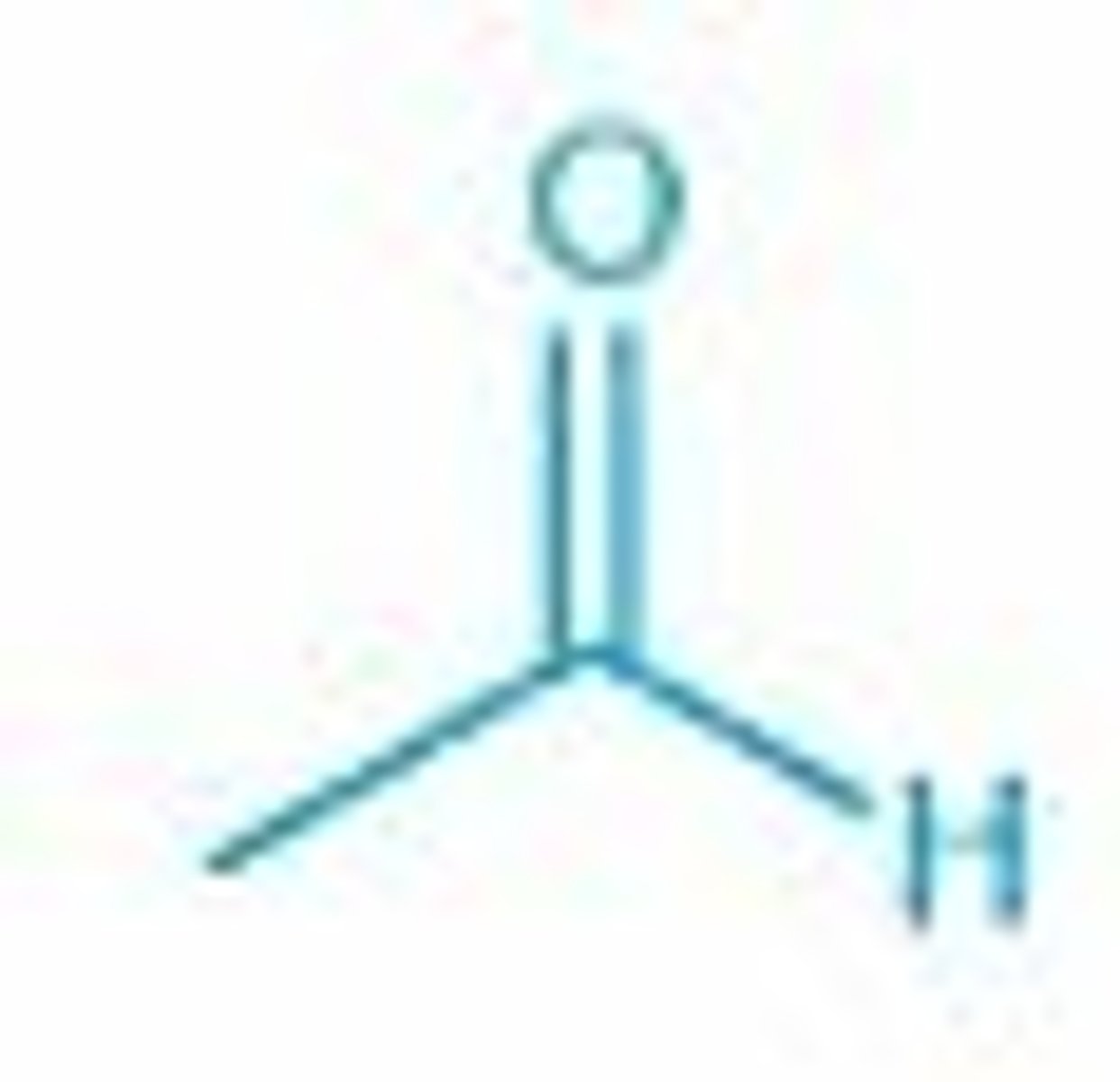
propionaldehyde (common name)
propanal
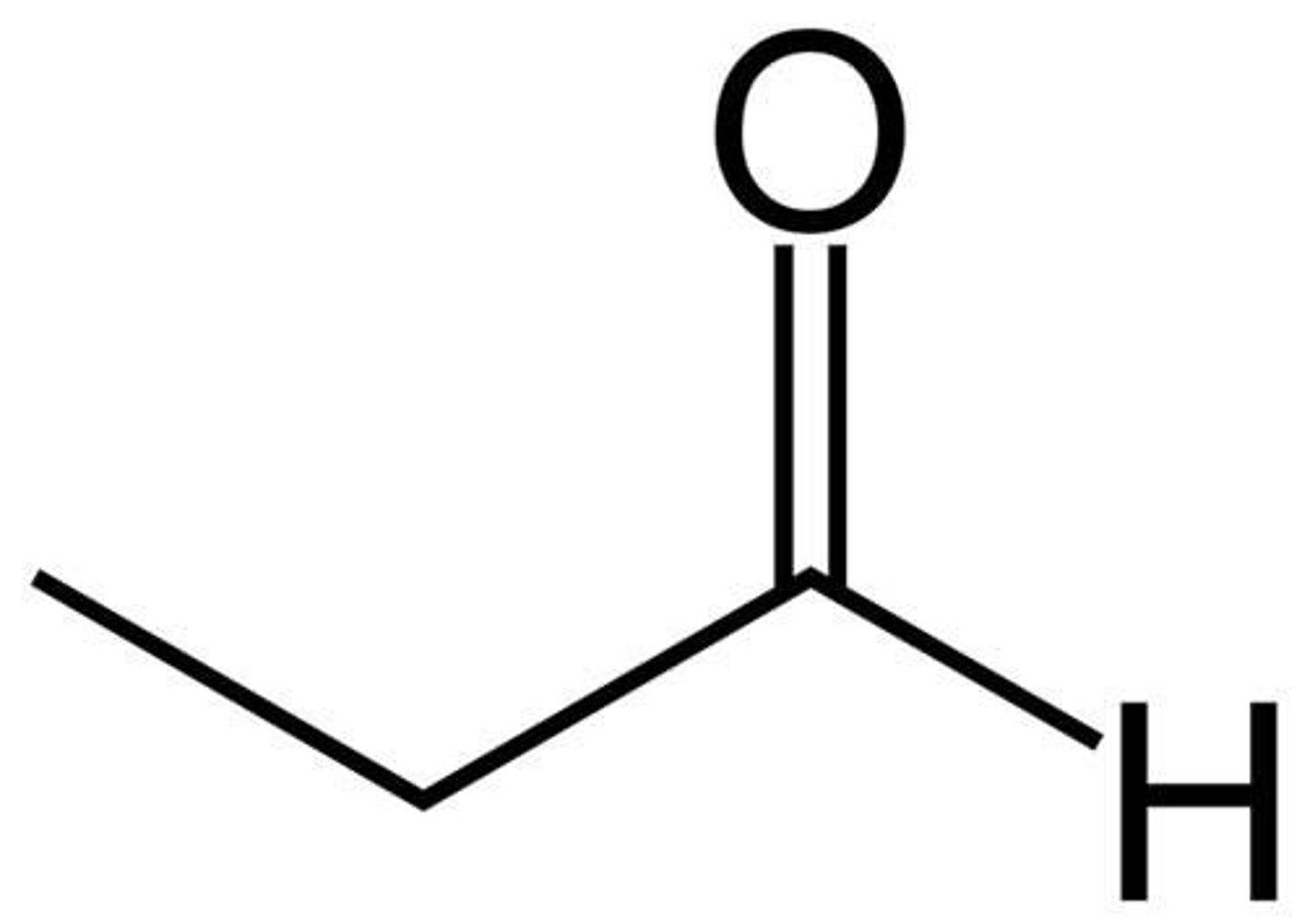
- Common names of ketones are made by listing the alkyl groups in alphabetical order followed by "ketone." IUPAC names use the "one" suffix.
- 2-propanone -> dimethylketone or acetone
- Methylvinylketone has a methyl group on one side and a vinyl group (double bond) on the other. IUPAC: 3-butene-2-one
-Carbon adjacent to carbonyl carbon called alpha - beta gamma etc as move away.
formic acid (common name)
methanoic acid
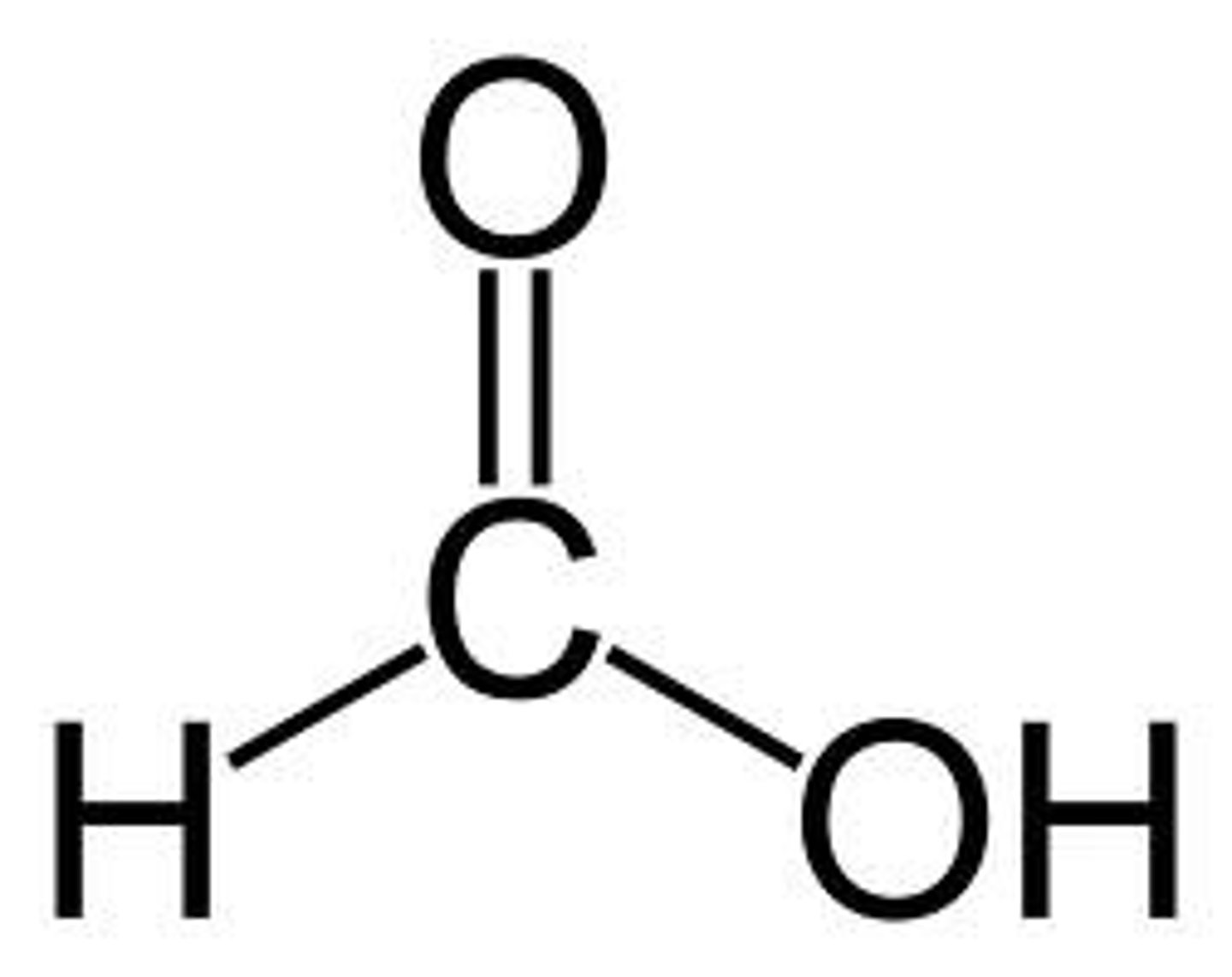
acetic acid (common name)
ethanoic acid
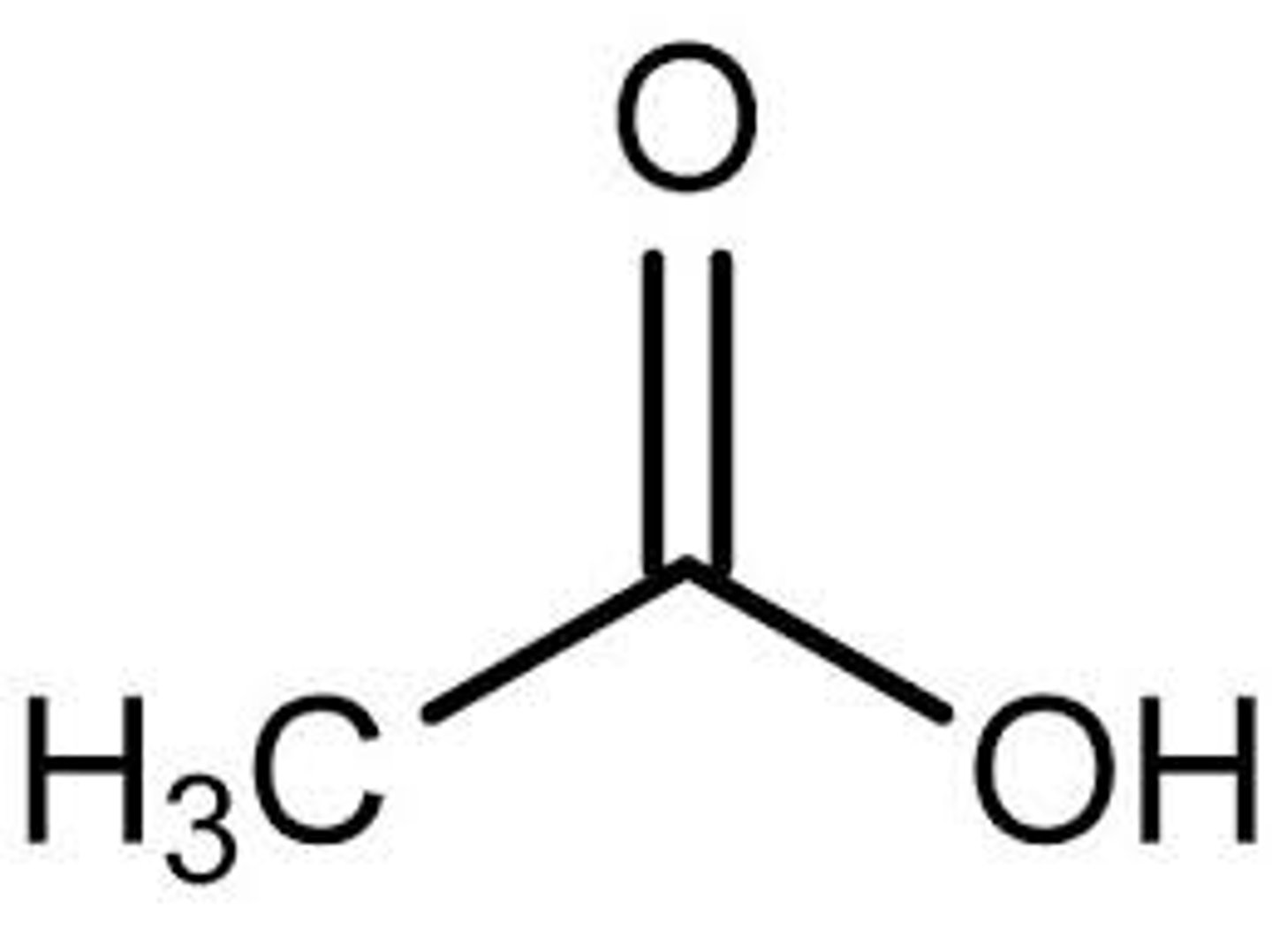
propionic acid common name)
propanoic acid
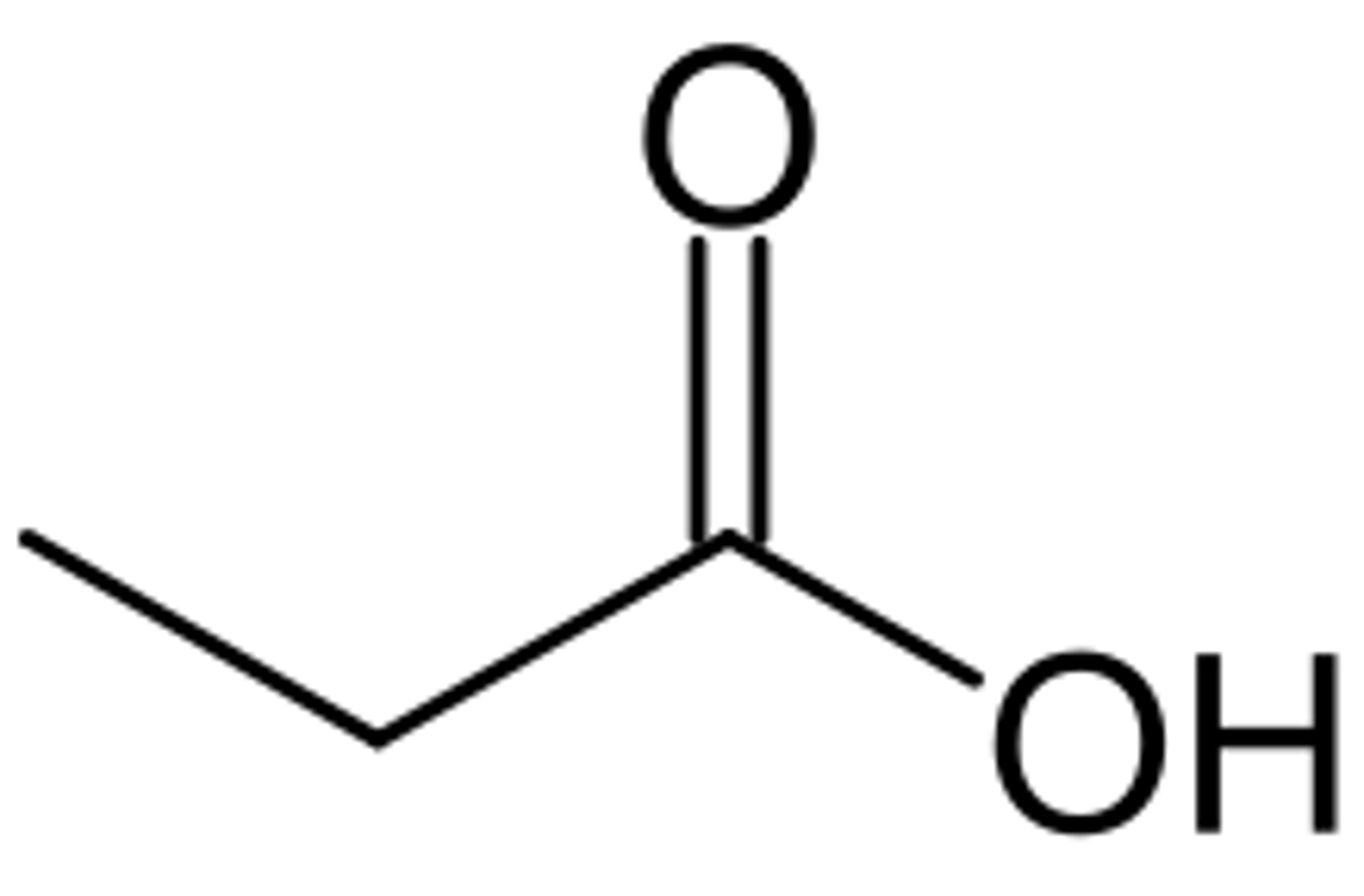
Carboxylic acid naming:
- Prefix: carboxy
- Suffix: oic acid (again replace -e)
Are the highest priority functional group in MCAT
Ester - cabroxylic acid OH becomes OR
Ester naming:
- First term is the alkyl name of the esterifying group.
- Second term is the name of the parent acid (carbonyl counts toward parent name).
- Prefix: alkoxycarbonyl (as functional group)
- Suffix: oate
- Example: methyl butanoate
carboxylic acid where replaced with amide (N attached to two other things)
Amide naming:
- Substituents bound to the nitrogen are labeled as prefixes with N-
- The suffix becomes -amide. (from -e)
- Prefix: carbamoyl or amido - and before parent
- Example: N-methyl-N-ethyl-butanamide, N,N-dimethylethanamide (just amide no N,N if hydrogens)
two carboxylic acids with one h2o removed
Anhydride naming:
- If an anhydride is not symmetrical, name both carboxylic acids (minus acid). If it is symmetrical, just use the one carboxylic acid.
- Prefix: alkanoyloxycarbonyl
- Suffix: anhydride.
- Example: ethanoic propanoic anhydride vs ethanoic anhydride
phthalic anhydride
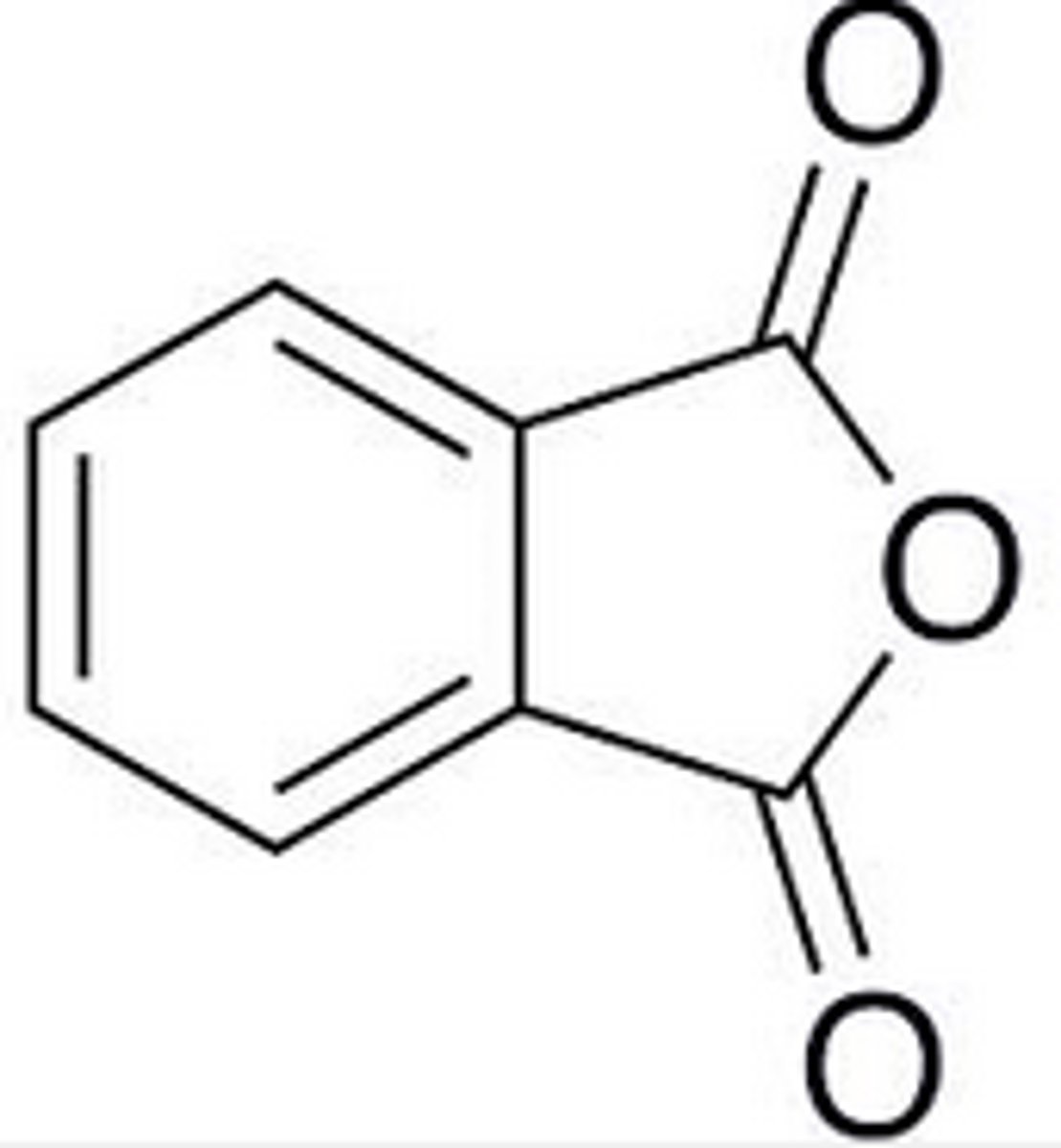
succinic anhydride
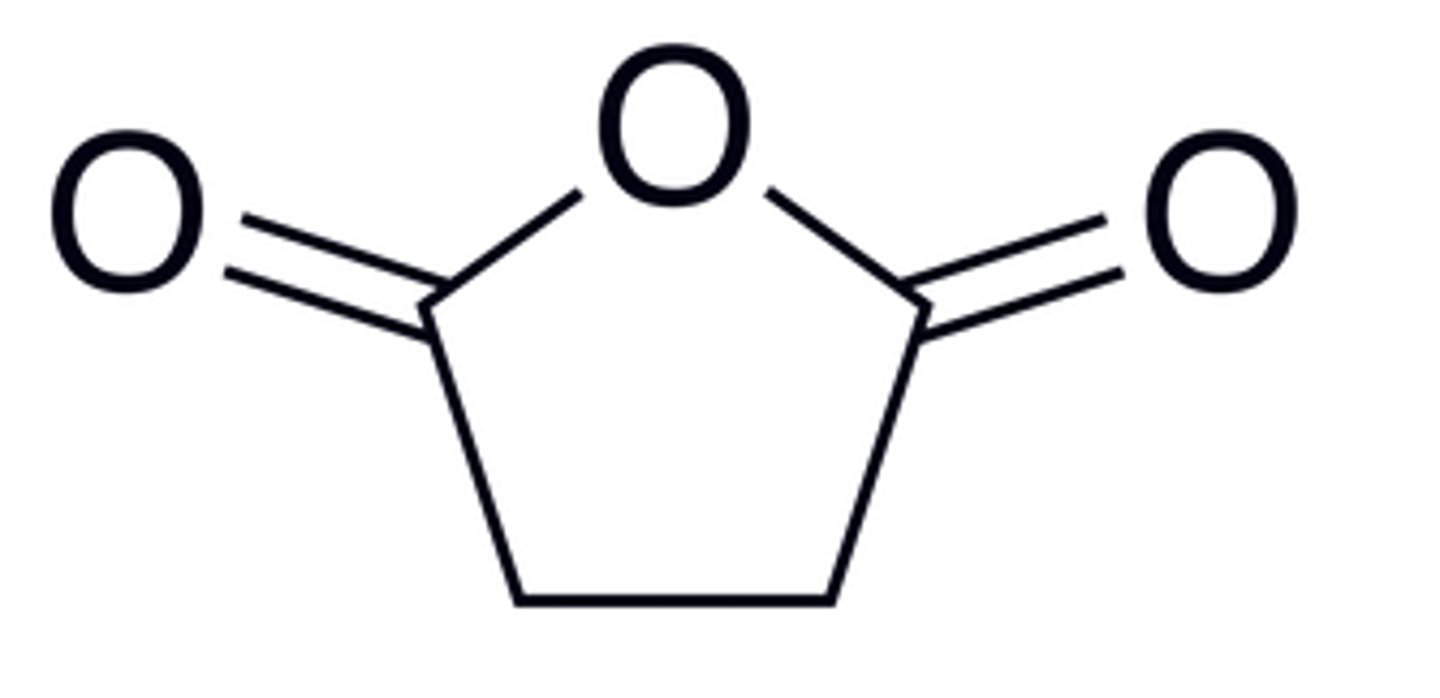
acetic anhydride
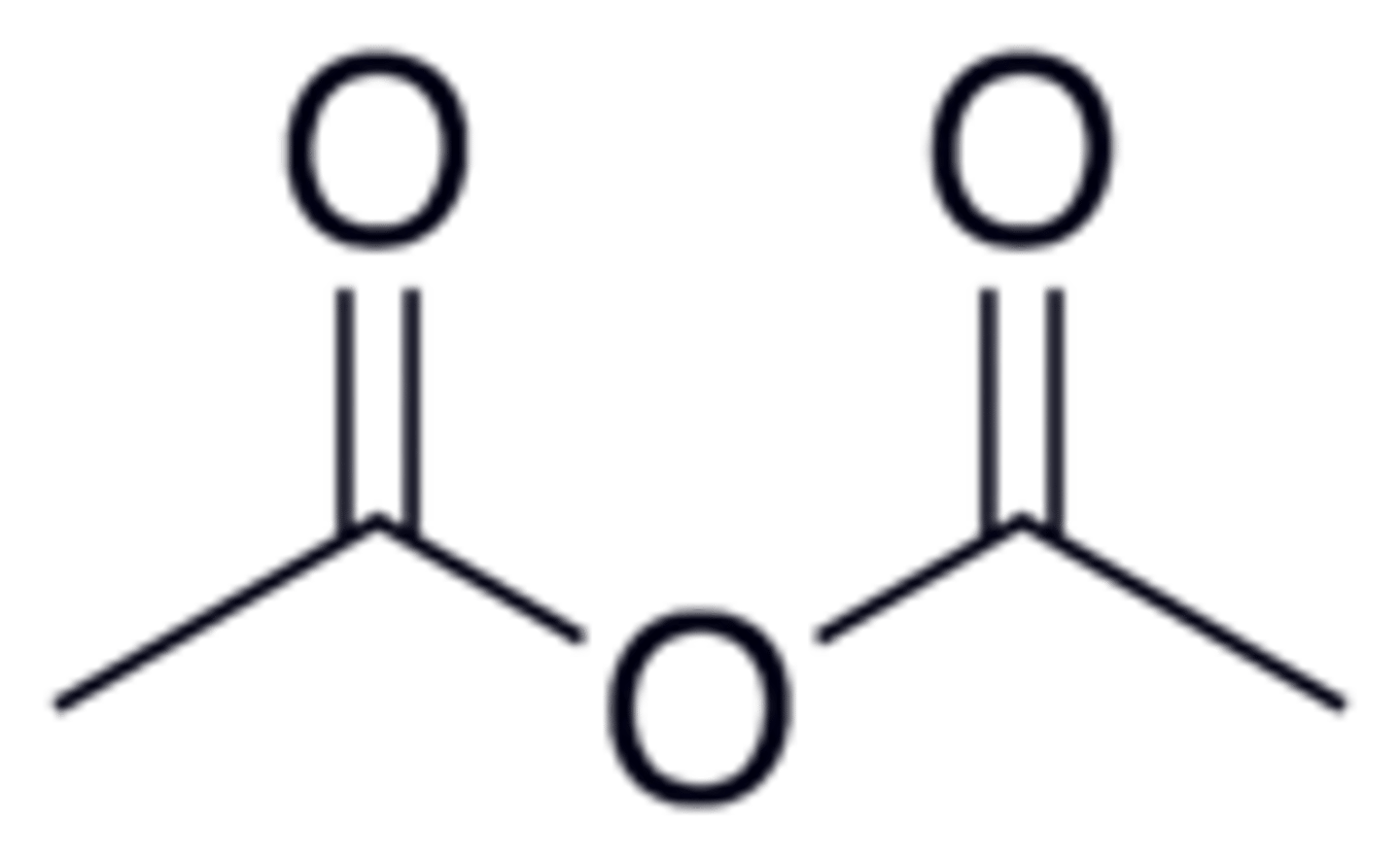
Major functional groups
*highest oxidation state (priority) to lowest:
1) carboxylic acid
2) anhydride
3) esters
4) amides
5) aldehydes
6) ketones
7) alcohol
8) alkenes
9) alkynes
10) alkanes
Isoner - same molecular formula but different structures
physical properties
- characteristics of a substance that can be observed or measured without changing the composition of matter
-EX: mp, bp, odor, density, color, solubility
chemical properties
Characteristics of a substance that determine how it will react with other substances, and result in changes in chemical composition
- chemical properties of a molecule are generally dictated by its functional groups
Isomers
Compounds with the same molecular formula but different structures.
EX: C5H12 with two different structure
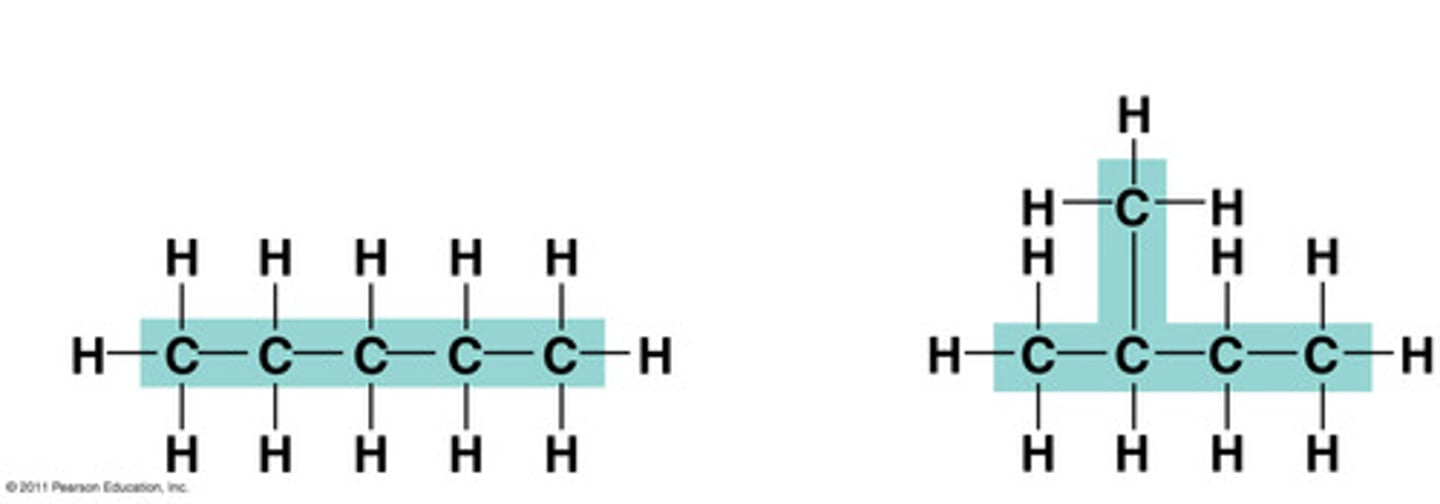
structural (constitutional) isomers
-same molecular formula, different connectivity
-same molecular weight
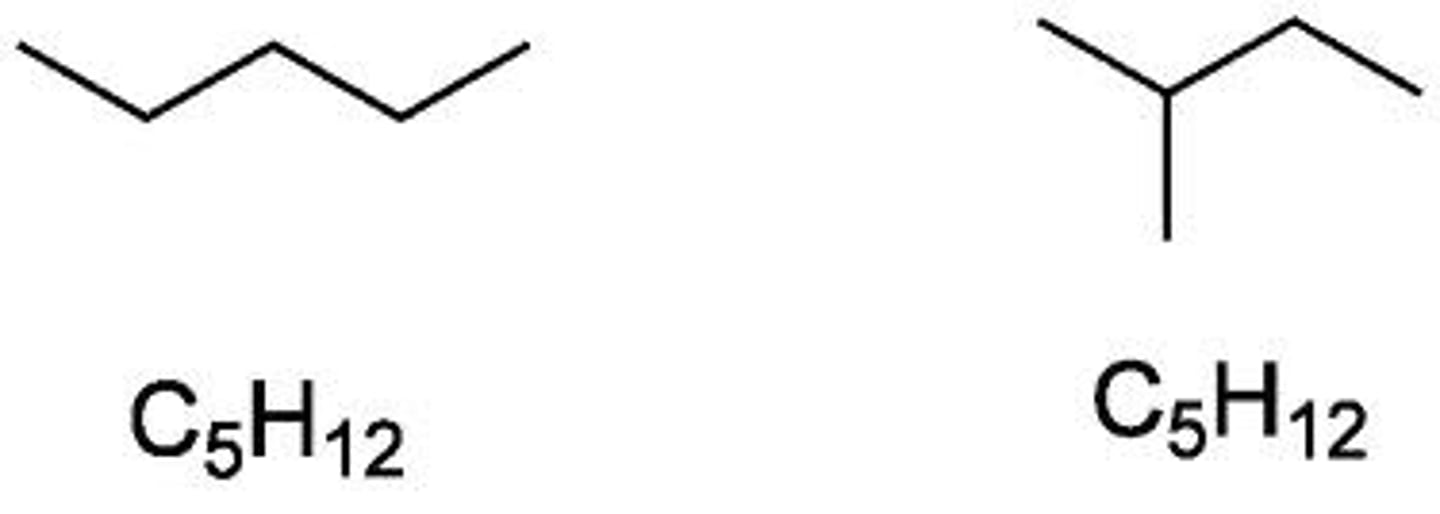
Flowchart of Isomer Relationships
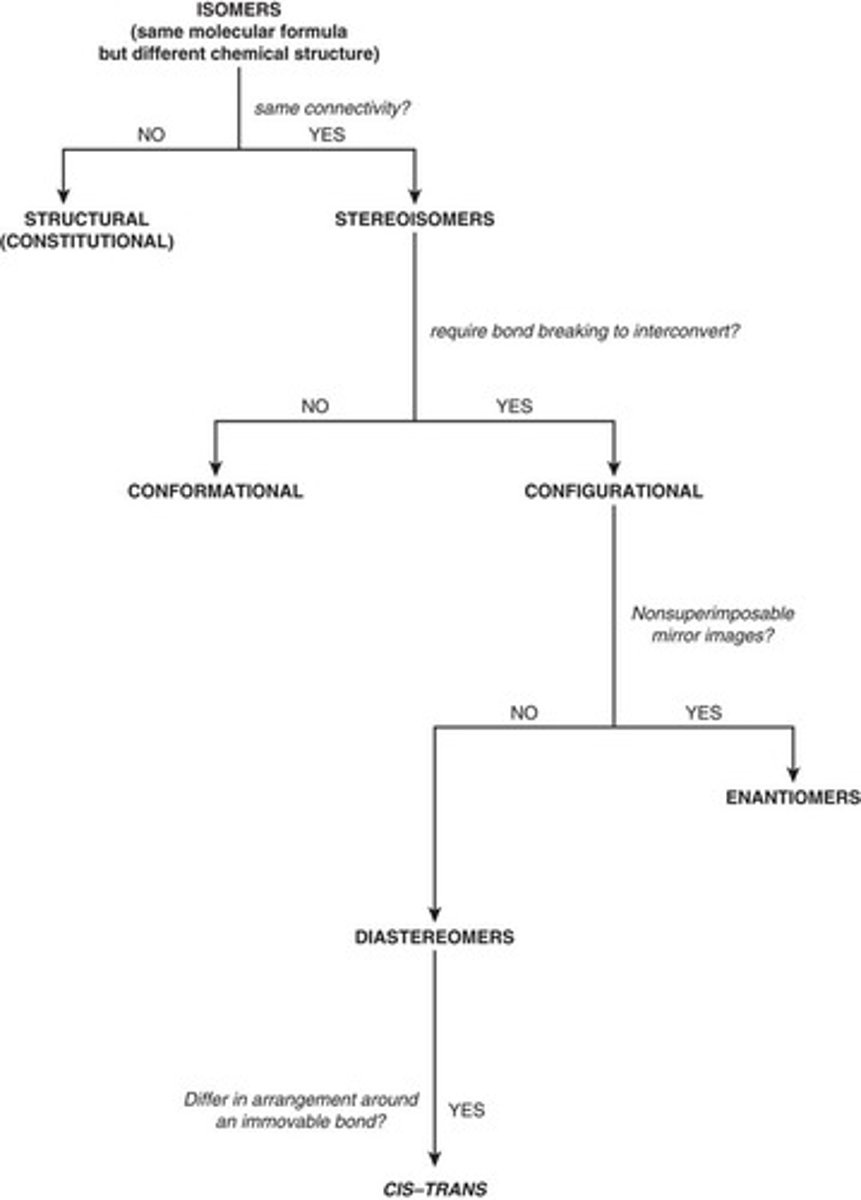
Stereoisomers
-same chemical formula.
-same atomic connectivity
-All isomers that are not constitutional
-different in how atoms are arranged in space (wedges-dashes)
- types include conformational and configurational isomers

conformational isomers
-differ by rotation around a single sigma bond (which creates varying levels of strain)
-most similar among isomers
-same molecule
-easy to visualize through Newman projections
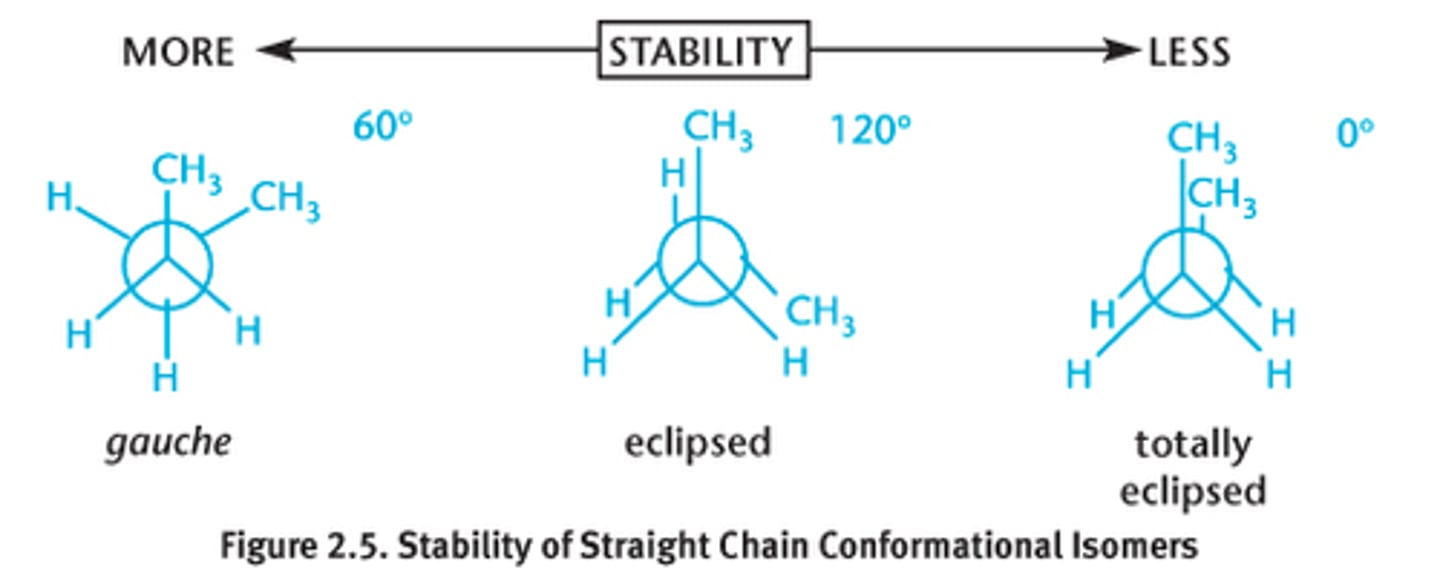
Gauche - awkward - when one methyl group too close to another.
Straight-chain conformations:
- Staggered: no overlap of methyl groups along the line of sight, groups can be (180°) and gauche (60°)
-Antiperiplanar - same plane opposite sides - descrobes largest groups
Eclipsed if overlap. Totally eclipsed in highest energy state when largest groups overlap. Synperiplanar (same plane same side)
Cycloalkanes
-can be stable or unstable depending on ring strain
-Ring strain arises from 3 factors:
1) angle strain:
-results when bond angles deviate from their ideal values by being stretched or compressed
2) Torsional strain
-when cyclic molecules must assume conformations that have eclipsed or gauche
3) Nonbonded strain (van der waals repulsion):
-when non adjacent atoms compete for the same space
chair conformation - can also be boat, twistboat, skewboat
.can undergo chair flip (hexane) and pass through half-chair conformation. Equatorial and axial groups switch and vice versa. bulky groups favor equatorial (reduce flagpole interactions)
axial if perpendicular to plane and parallel called equatorial.
-The chair-shaped conformation of cyclohexane that has no angle strain and has no torsional strain because it is perfectly staggered about all the C-C bonds. It is strain free.
-bulkiest group favor equatorial position to reduce nonbonded strain (flagpole interactions) with axial groups
-cis. same side or else trans
configurational isomers
- interconverted only by breaking bonds and reforming covalent bonds
-can be enantiomers or diastereomers - can both be considered optical isomers since affects rotation of plane polarized light
-Chiral - mirror cannot be superimposed on original. Achiral objects have mirror images that can be superimposed - a fork for example. Chiral compounds have chiral center
Enantiomers
-same connectivity
-nearly identical physical and chemical properties
-rotate plane polarized light in OPPOSITE direction with same magnitude
-react DIFFERENTLY in chiral environments
optical activity
the rotation of plane-polarized light by a chiral molecule
-compound that rotates the plane of polarized light to the right (clockwise)(d- (dextrorotatory))(+)
-to the left (counterclockwise)(L- (Levorotatory))(-)

specific rotation
-dependent on concentration and the length
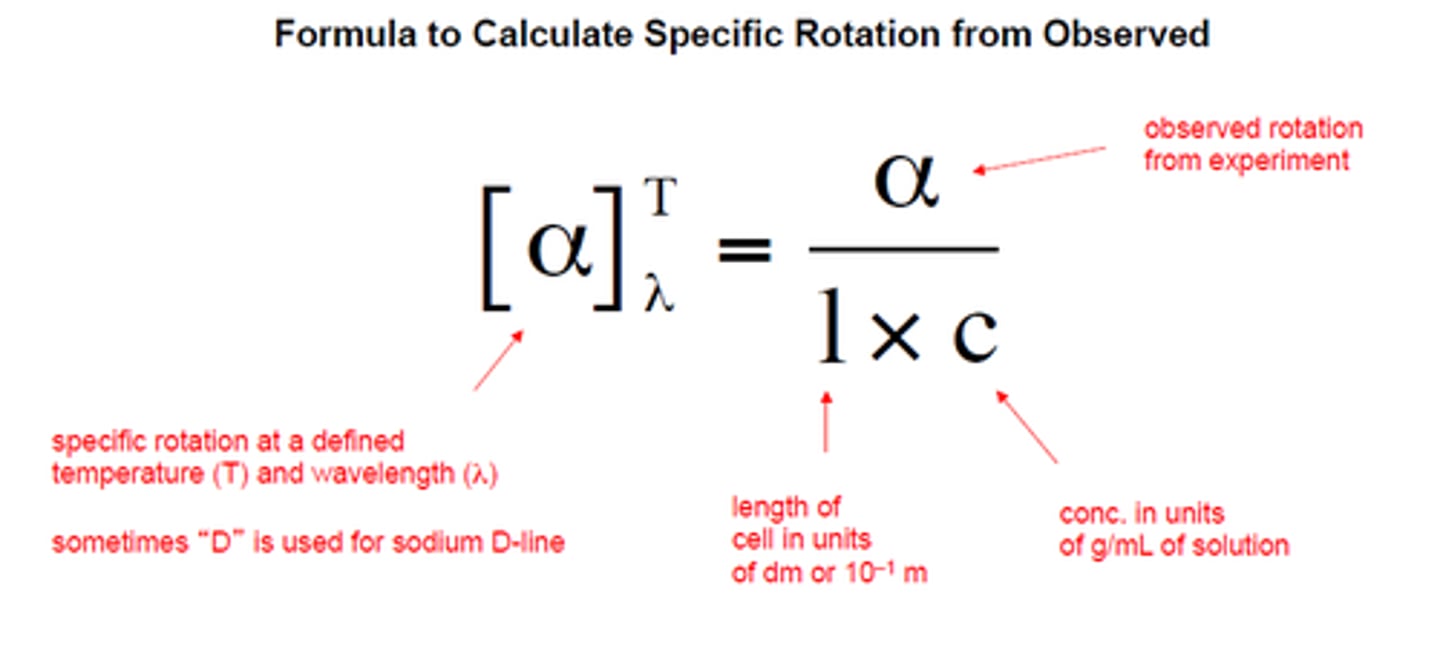
plane-polarized light
will not rotate if molecules:
1)meso
2)achiral
3)racemic
Racemic Structure
-when (+) and (-) enantiomers are present in equal concentrations
--->>>rotations cancel each other out and NO OPTICAL ACTIVITY is observed
-reacting 2 enantiomers with single enantiomer of another compound, lead to 2 diastereomers
EX: (+) and (-) reacted with (+)enantiomer each---->(+,+) and (-,-) diastereomers
-
-diastereomers are any stereoisomers that are not enantiomers (not mirror images). For any molecule with n chiral centers, there are 2^n possible stereoisomers. Have different chemical properties. Knowing specific rotation of one gives no info on others.
Cis-trans isomers (geometric isomers) when substituents differ in position around immovable bond - like double bond or ring
.
Meso compounds
.
Relative configuration is configuration in relation to other chiral molecule. Absolute configuration is spatial arrangement of groups indep.
-Optically inactive (achiral) molecule with two chiral centers
-have a plane of symmetry -has meso- name (ex meso-tartaric acid)
Molecular equivalent of racemic mixture
.
E,Z, nomenclature for polysubstituted bonds. Priority based on higher atomic number. If same, determined by next atom outward. Z if together (zusammen Zame). E if opposite.
.
R/s for chiral center in molecules. Same priority rule as EZ. Assign priority around the chiral center. Orient so atom with lowest priority in back (into page). Draw circle mentally connecting 1 to 2 to 3 (not to 4). If counterclockwise, center called S. if clockwise, R (rectus)
.
Fischer projection horizontal lines out of page and vertical go into page. Follow same steps as above with priority and moving to into page. Draw circle but flip r or s to get true.
. Switching one pair inverts stereochemistry. swtiching two retains.
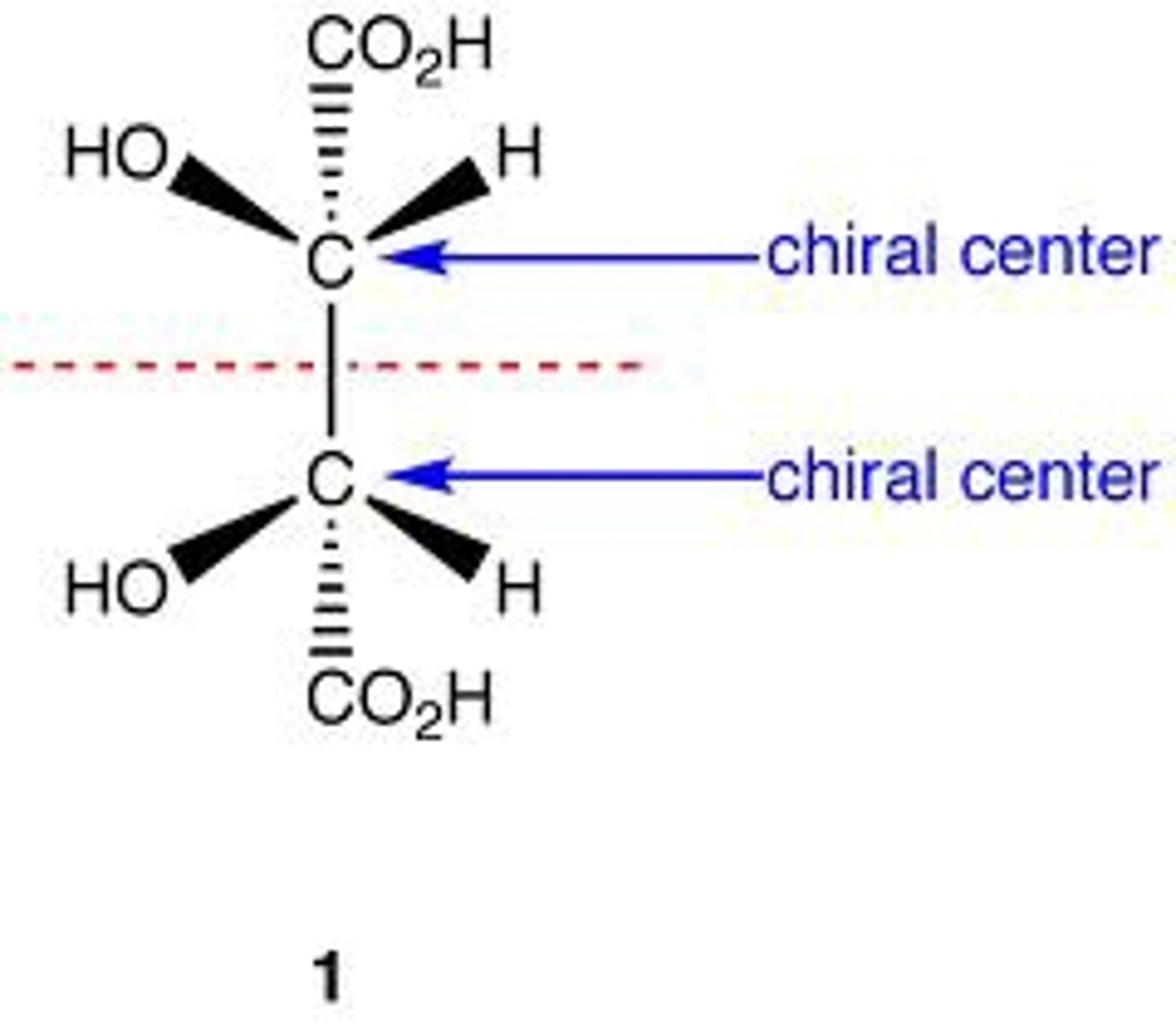
principal quantum number: n
- energy level of a given electron in an atom
- is a measure of size
- smaller number = closer the shell is to the nucleus and has lower energy
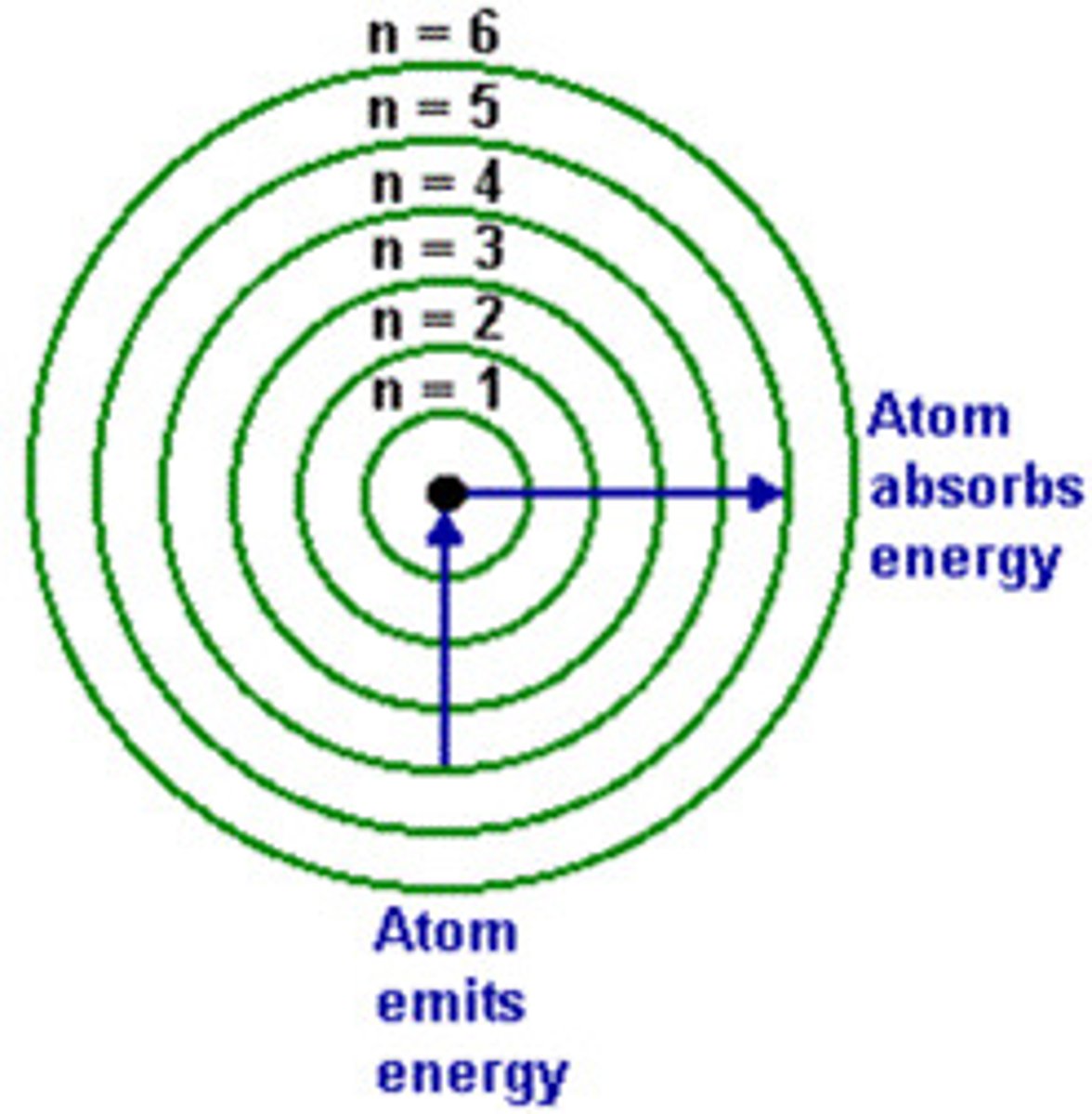
azimuthal quantum number: l
- ranges from 0 --> (n-1)
-energy increase as "l" increases
*describes subshells:
- 0: s subshell
- 1: p subshell
- 2: d subshell
- 3: f subshell
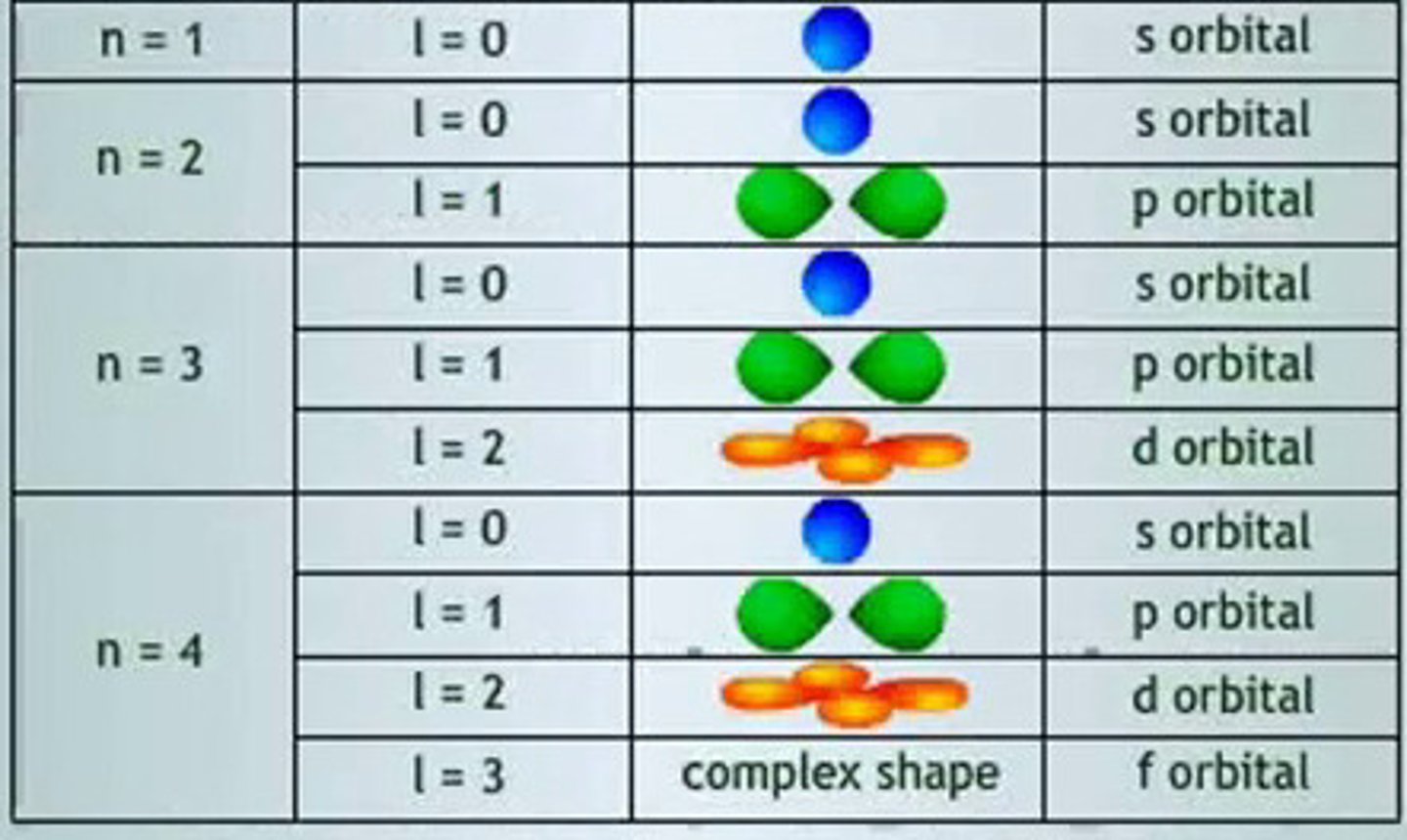
magnetic quantum number: ml
describes orbitals
- ranges from -l --> +l
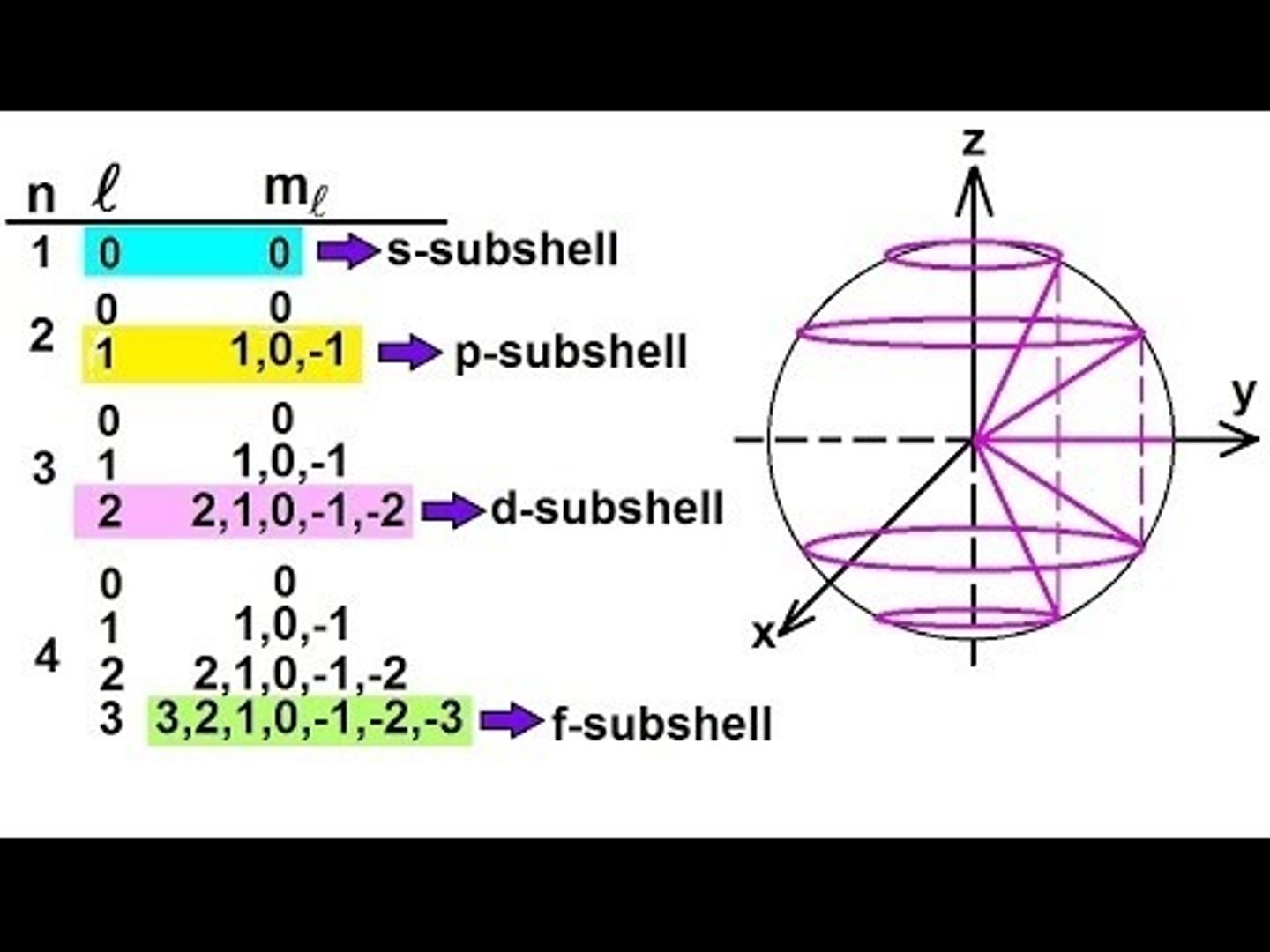
spin quantum number: ms
distinguishes one of the two electrons in a particular orbital
- 1/2
- -1/2
Orbitals
have areas (nodes) where probability of finding electron is zero
-P orbital has one node per orbital
-D has two nodes and 4 lobes per orbital
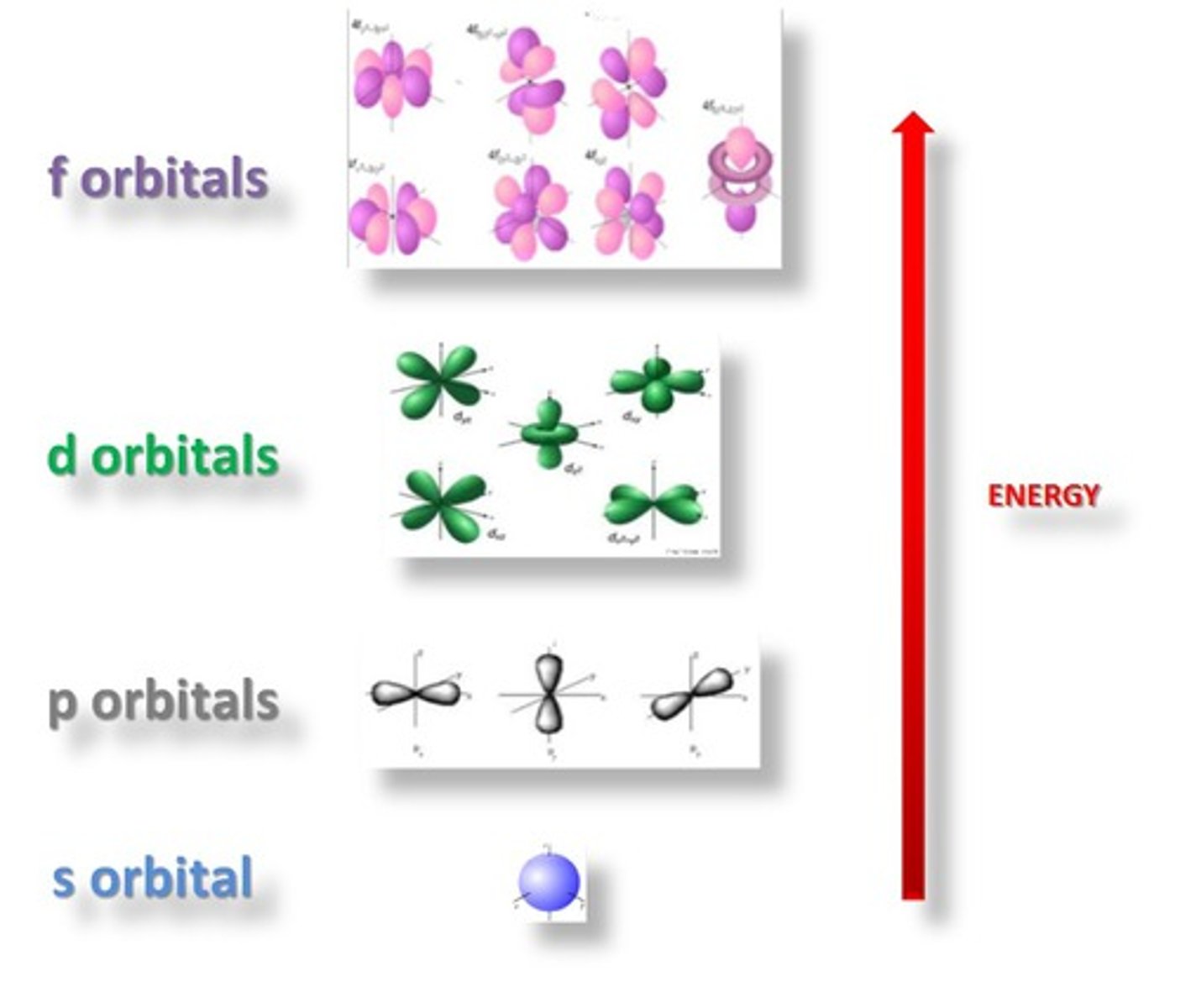
Molecular Orbitals
-formed when two atomic orbitals combine
-Bonding orbitals: lower in energy (more stable)
-Antibonding orbitals: higher energy (less stable)
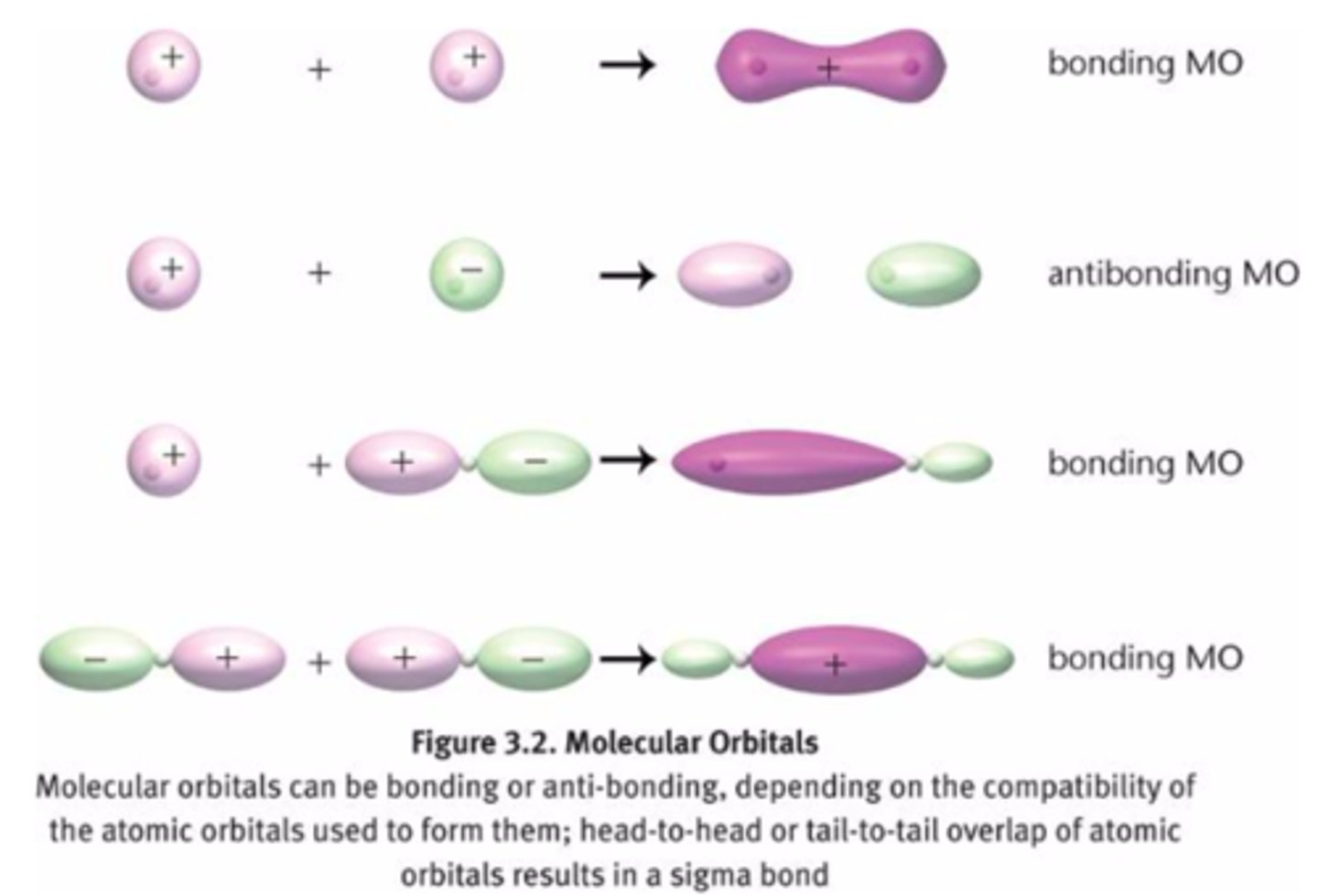
π bond
-when two p-orbitals line up in a parallel fashion, electron clouds overlap + a π bond is formed
-weaker than sigma

hybrid orbitals
formed by mixing different types of orbitals
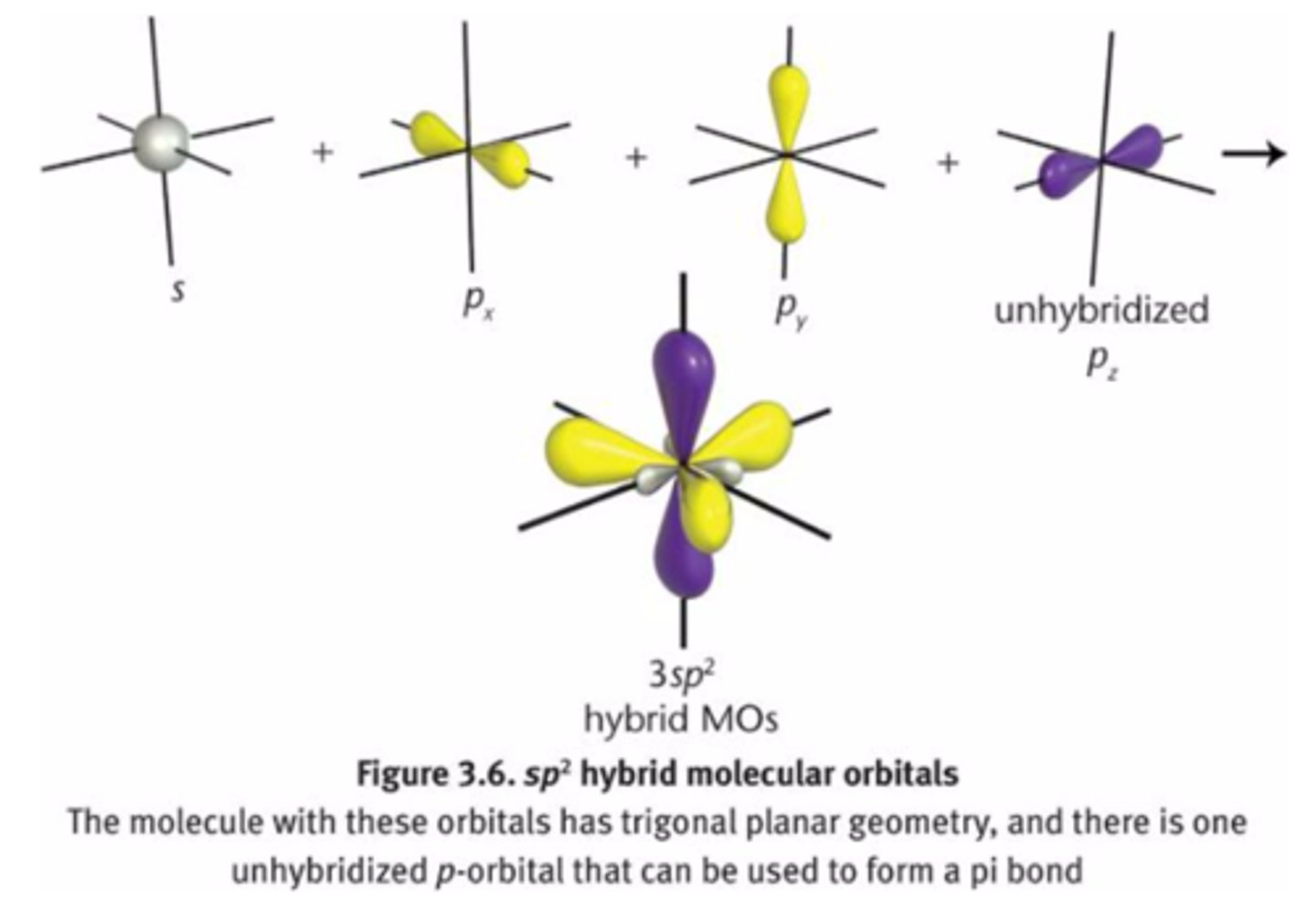
sp3 orbitals
-single bond
-tetrahedral
25% s character
75% p character
more p character = longer bond
more s character = shorter bond

sp2
-double bond
-trigonal planar
33% s character
67% p character
one s-orbital
two p-orbitals
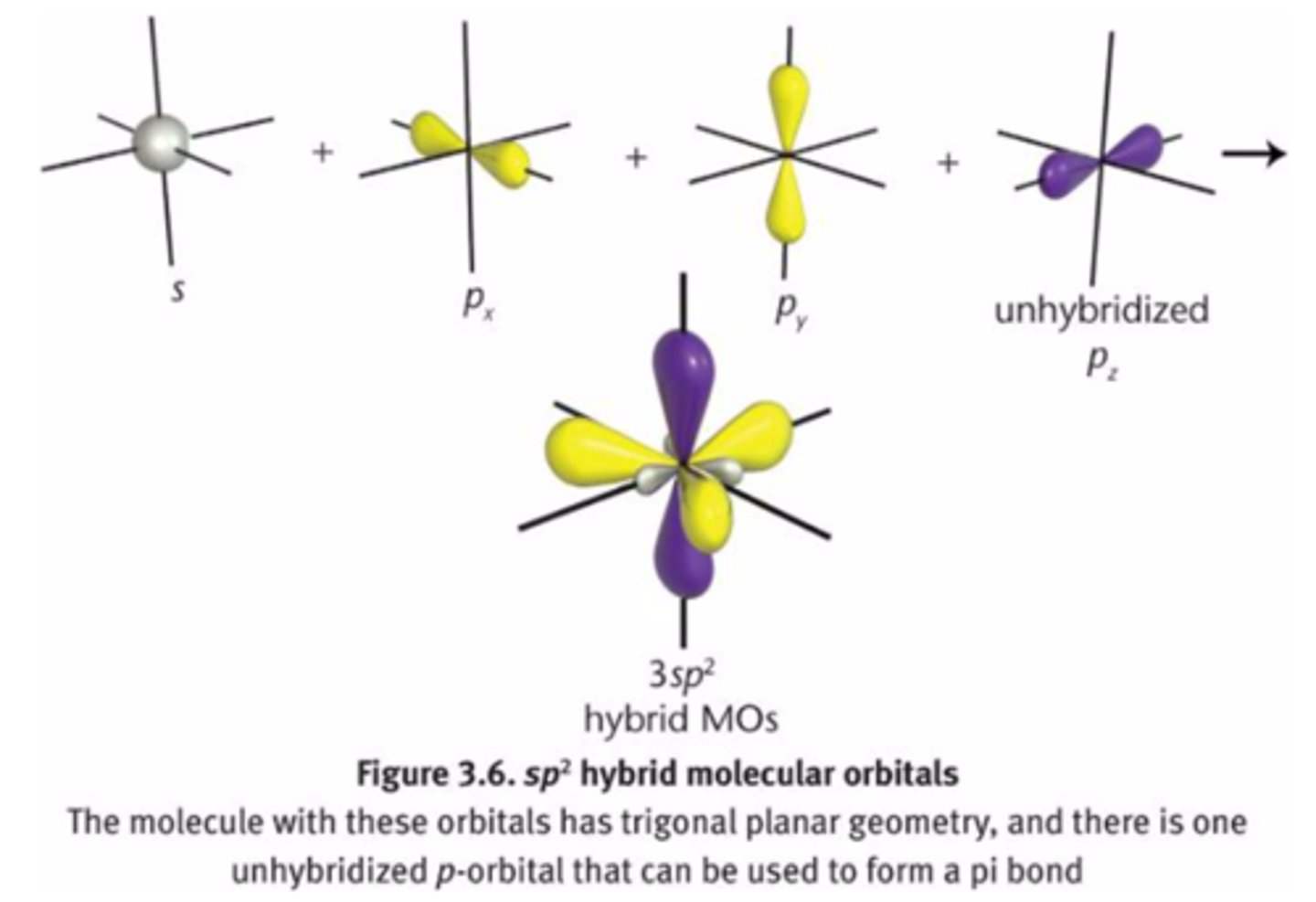
sp
-triple bonds
-linear geometry
one s
one p
50% s character
50% p character
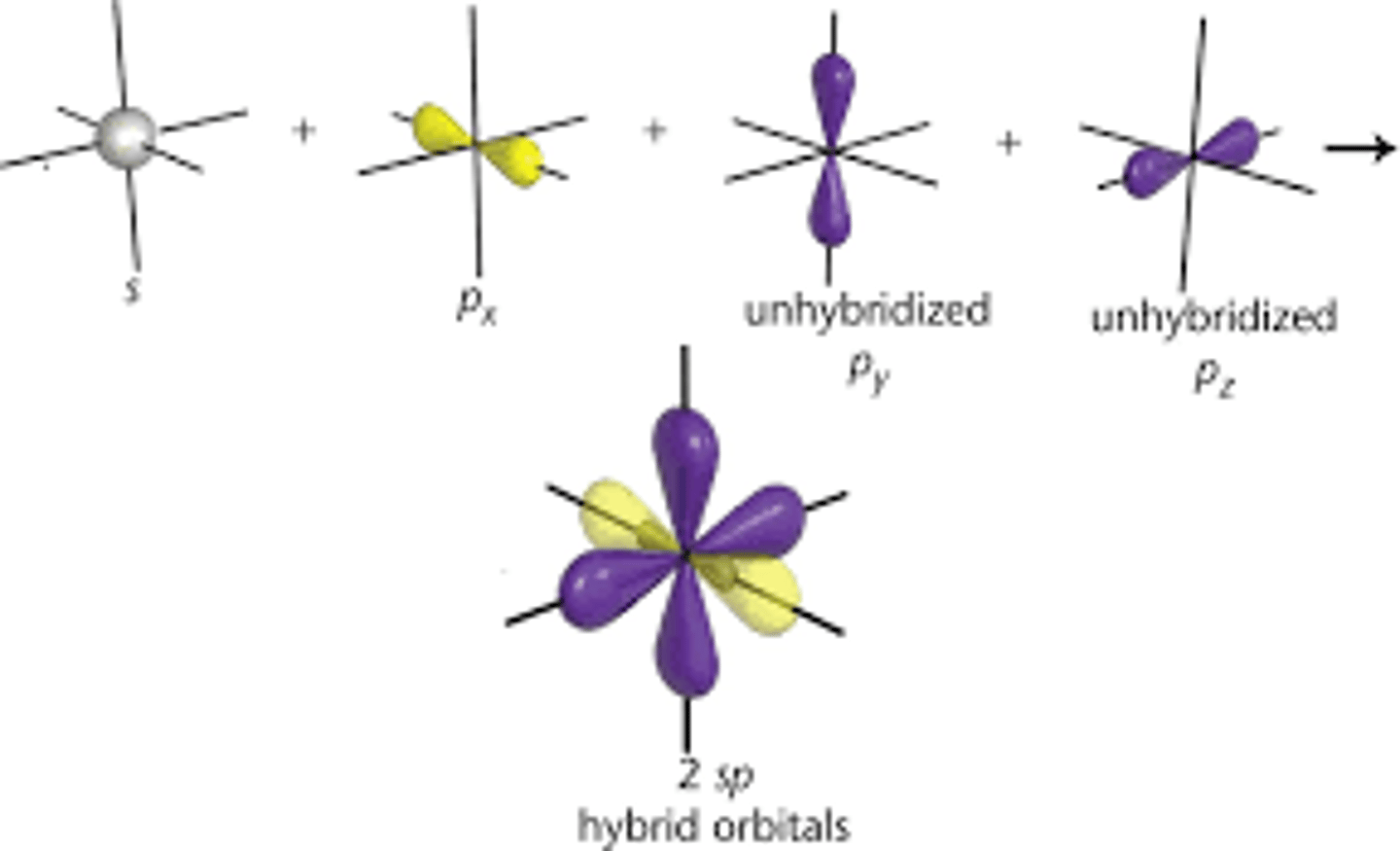
Conjugation
-in resonance
-requires alternating single + multiple bonds because this pattern aligns a number of unhybridized p-orbitals down the backbone of a molecule
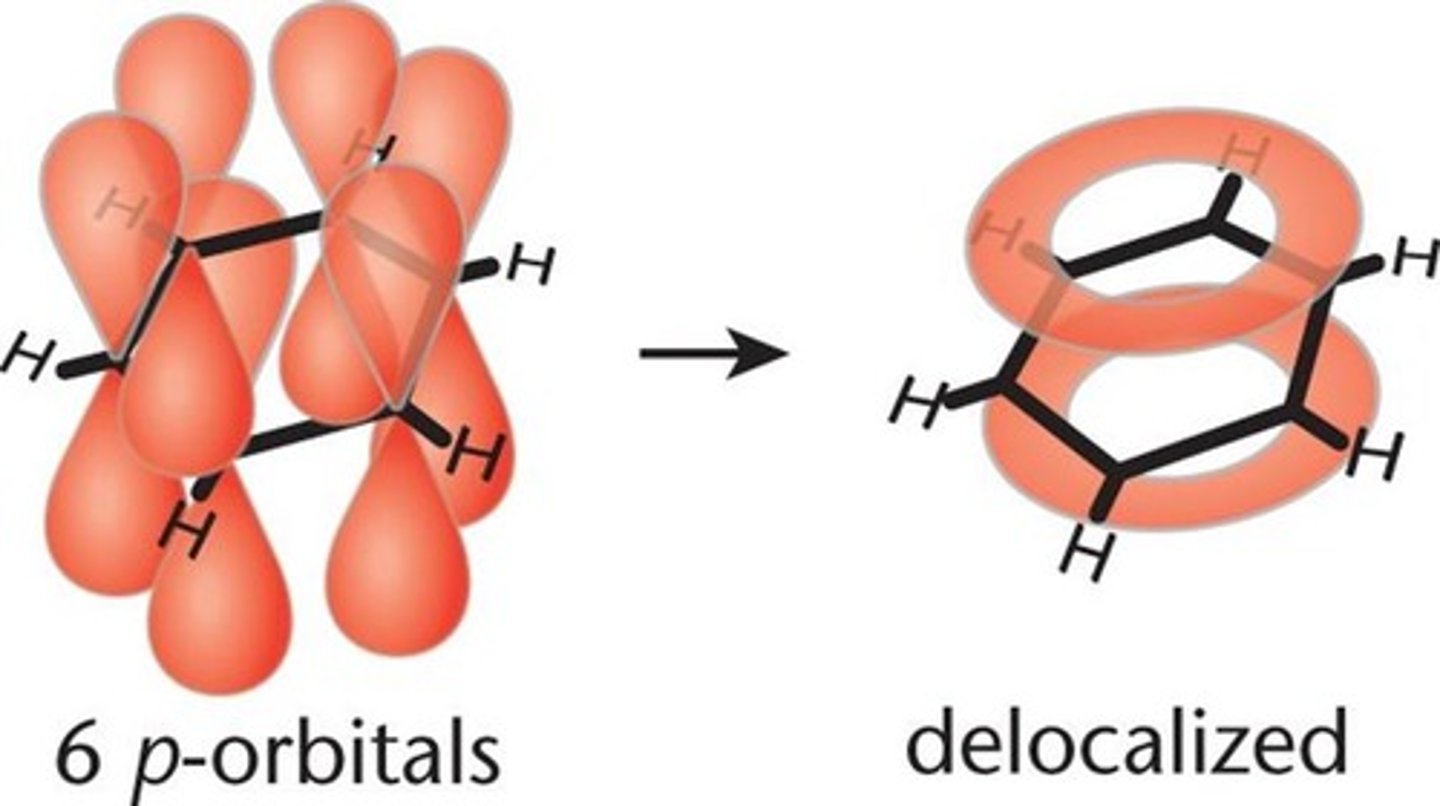
Lewis Acid
-electron pair acceptor
-electrophile
Lewis Base
-electron pair donor
-nucleophile
-have lone pair and are often anions
-when lewis interact, form coordinate covalent bonds

Bronsted-Lowry acid
proton donor (H+)
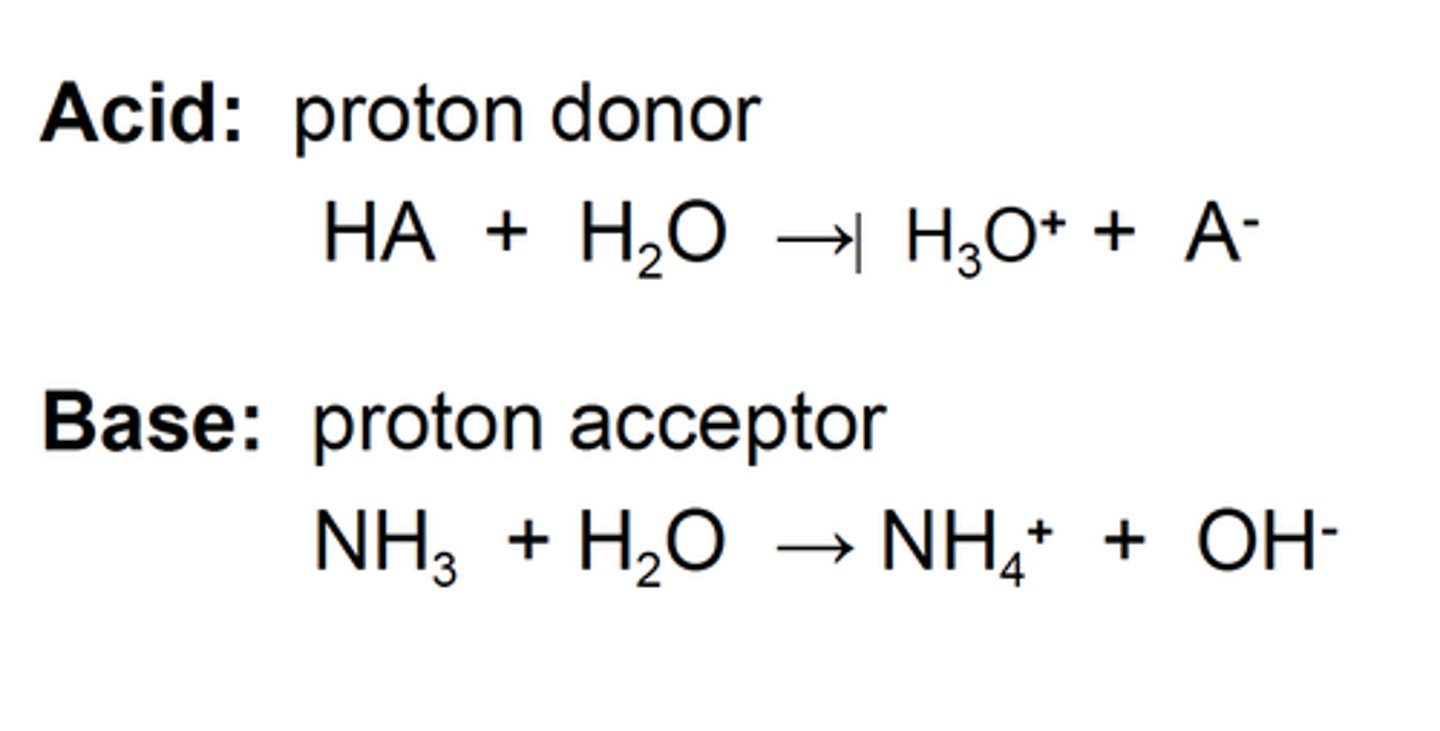
Bronsted-Lowry base
proton acceptor
amphoteric if can do both
Rules for acidity
1) bond strength decreases down the periodic table --> acidity increases
2) more electronegative = higher acidity
acid dissociation constant
measures the strength of an acid in solution
pka=-log ka
(more acidic-->more (-)pka--->more smaller)
(more basic--->more (+)pka--->larger)

Functional groups that act as acids
- alcohols
- aldehydes
- ketones (at the α-carbon) (alpha carbons are stablized by resonance when deprotonated)
- carboxylic acids + most derivatives
- easier to target with basic (nucleophilic) reactants because they readily accept a lone pair
-higher electronegativity = more acidic. Lower down group = more acidic
Functional groups that act as bases
- amines
- amides (carbonyl)
Factors that determine nucleophilicity
(nucleophiles are good bases but they are not the same thing. Nucleophile is a kinetic term)
-Charge: increases with more negative charge
- Nu decreases as EN increases
-steric hindrance
-Solvent: Protic solvents can hinder nucleophilicity by protonating the nucleophiles or through hydrogen bonding
Nucleophile
- nucleus loving
-lone pairs or pi
-good bases (more basic-->more reactive)
-most Nu: C, H, O, N
-more Nu, more (-)
-more bulkier, less Nu
-Strong Nu: RNH2, HO-, RO-, CN-, N3-
-weak Nu: H2O, ROH, RCOOH
-fair Nu: NH3, RCO2-

In polar protic solvents
*nucleophilicity increases down the periodic table
- carbox. acids, ammonia/amines, water/alcohols
- can hydrogen bond which will compete with bonding with electrophile
-HI strong enough acid that protons do not interfere
In polar aprotic solvents
*nucleophilicity increases up the periodic table
- DMF, DMSO, acetone
- can't hydrogen bond
-nucleophilicity directly related to basicity
Electrophile
-electron loving
-accepts e- pair (+)
-act as lewis acid (acceptor)
-alcohol, aldehydes, ketones, CA and their derivatives
*most reactive electrophilicity to least: (almost identical to acidity)
anhydride-->CA--->esters--->amide
-nucleophile and electrophile are kinetic terms unlike acid base
-higher reactivity makes things of lower reactivity
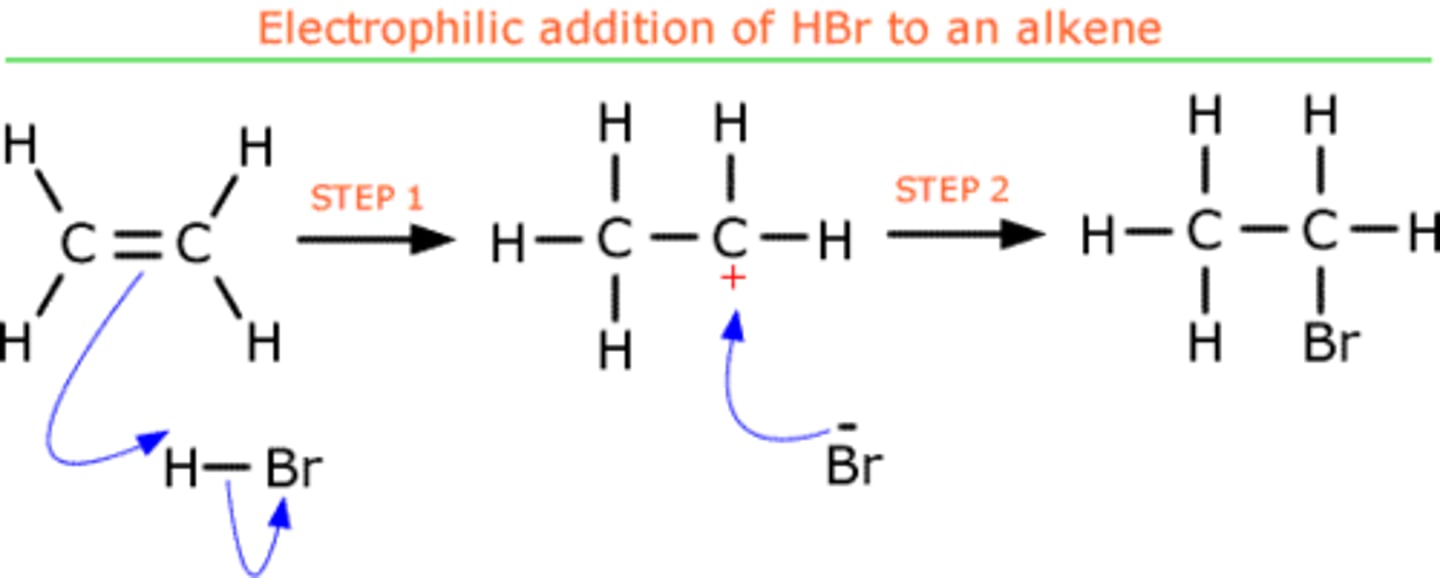
Heterolytic reactions
bond is broken and both electrons are given to one of the two products
opposite of coordinate covalent bond formation. weak bases more stable with electrons

Good leaving groups
-weak bases: I-, Br-, Cl-
-alkanes and H+: NEVER serve as LG
-in substitution reactions: weaker base (LG) is replaced by stronger base (Nu)
SN1 reactions
(unimolecular nucleophilic substitution)
- 2 steps
1) leaving group leaves and generates a carbocation (rate limiting/slower step)
2) nucleophile then attacks the carbocation and the substitution product results
-Kinetics: reaction rate = k[electrophile] (first order)
-Favoring Conditions: non-basic, weaker nucleophiles favor unimolecular substitutions. more substituted carbocation, polar protic slvent (stabilize cation)
ofte4n makes racemic mixture
![<p>- 2 steps</p><p>1) leaving group leaves and generates a carbocation (rate limiting/slower step)</p><p>2) nucleophile then attacks the carbocation and the substitution product results</p><p>-Kinetics: reaction rate = k[electrophile] (first order)</p><p>-Favoring Conditions: non-basic, weaker nucleophiles favor unimolecular substitutions. more substituted carbocation, polar protic slvent (stabilize cation)</p><p>ofte4n makes racemic mixture</p>](https://knowt-user-attachments.s3.amazonaws.com/8cfb29fb-6079-4ad1-9e44-0a0426b12865.jpg)
SN2 reactions
(bimolecular nucleophilic substitution)
1 step --> concerted reaction
- nucleophile attacks the compound at the same time as the leaving group leaves
Kinetics: reaction rate = k[nucleophile][electrophile]
Solvent: favored by polar aprotic solvents (no H-bonding)
Favoring Conditions: strong non-bulky nucleophile will favor SN2 reactions
*backside attack:
- nuc. must be strong
- substrate cannot be sterically hindered
- less substituted = more reactive
-inverts geometry (stereospecific)
![<p>1 step --> concerted reaction</p><p>- nucleophile attacks the compound at the same time as the leaving group leaves</p><p>Kinetics: reaction rate = k[nucleophile][electrophile]</p><p>Solvent: favored by polar aprotic solvents (no H-bonding)</p><p>Favoring Conditions: strong non-bulky nucleophile will favor SN2 reactions</p><p>*backside attack:</p><p>- nuc. must be strong</p><p>- substrate cannot be sterically hindered</p><p>- less substituted = more reactive</p><p>-inverts geometry (stereospecific)</p>](https://knowt-user-attachments.s3.amazonaws.com/5f01ab03-e26c-448b-a0d6-175fcaef099a.jpg)
Oxidation
- loss of electrons
- increasing the number of bonds to oxygen or other heteroatoms (besides carbon + hydrogen)
Reduction
- gain in electrons
- increasing number of bonds to hydrogen
oxidizing agent
- Oxidation is loss of hydrogens (hydrogen atoms not ions) or gain of O bonds
-element or compound in an oxidation-reduction reaction that accepts an electron from another species
- gaining electrons--->reduced
- good oxidizing agents have a high affinity for electrons (O2, O3, Cl2) or
- high oxidation states (Mn 7+, MnO4-, Cr 6+ in chromate CrO4 2-)
-primary alcohols can be oxidized to aldehyde and then to carboxylic acid
-secodary alcohols to ketones
-oxidizing agents typically contain metals bonded to large number of oxygens. Oxydation reactions tend to increase number bonds to oxygen
Reducing agents
- bond between carbon and more electronegative element replaced with less electronegative element (than cabron)
-reducing agents often contain metals bonded to a large number of hydrides
-Na+, Mg, Al, Zn (low EN and low IE)
-good reducing agents: LiAlH4, NaH, CaH2, NaBH4 (b/c contain H-)
-increase bonds to hydrogen
-oxidation and rediuction usually go all the way
Chemoselectivity
-preferential reaction of one functional group in the presence of other functional groups
Highest priority functional group
- is most likely to be acted on by redox reagents and during nucleophile and electrophile reactions
- Ex: COOH is most oxidized, has the most Electronegative groups around it and therefore has a larger partial positive charge on it
Order: COOH, aldehyde (less steric hindrance), ketone, alcohol or amine
Phenols - aromatic benzene rings with OH
Steric hindrance
- prevention of reactions at a particular location within a molecule due to the size of substituent groups
-sn2 wont happen with tertiary for example
Protecting Groups for alcohols
mesylate and tosylates
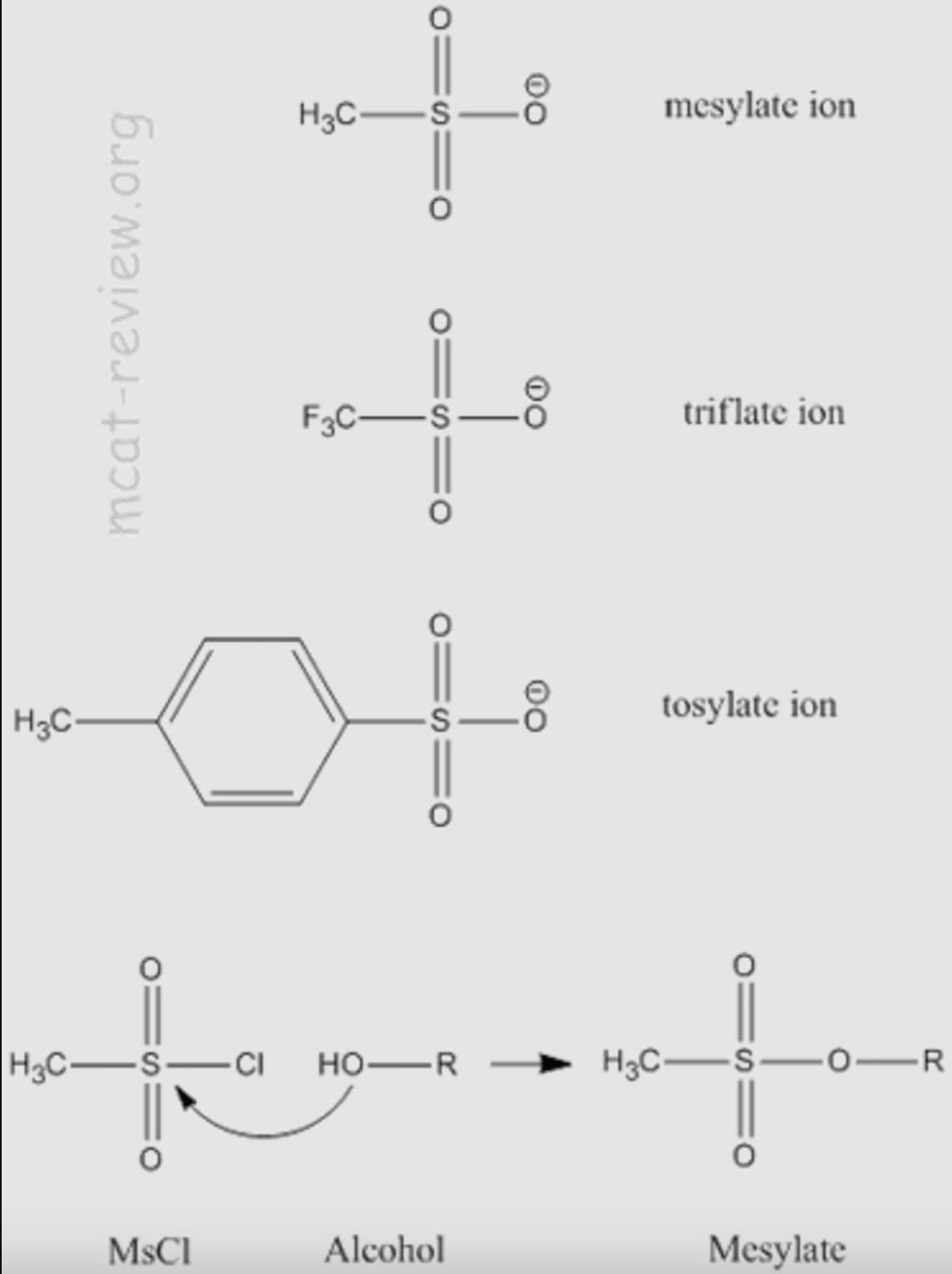
electron withdrawing groups
increase acidity
-double bond oxygen more EW than single bond
electron donating groups
decrease acidity
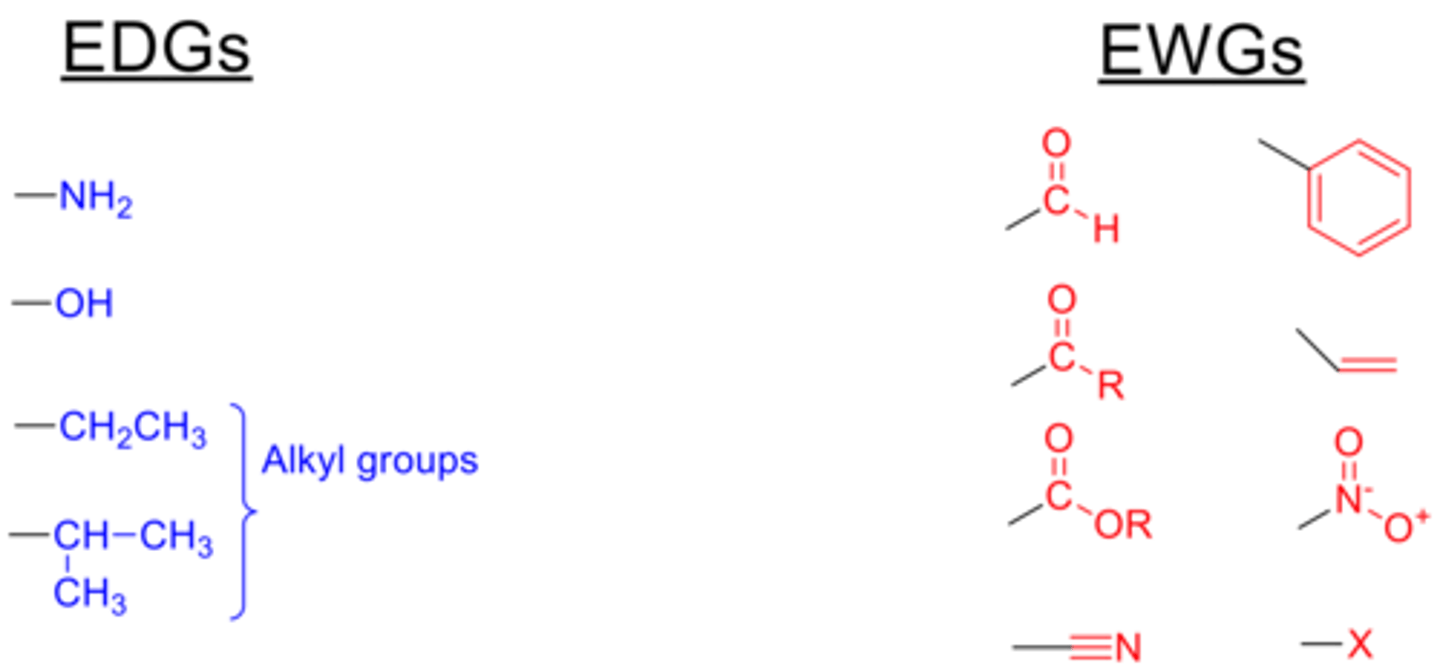
ortho (o-), meta (m-), para (p-)
Ex. o-bromophenol
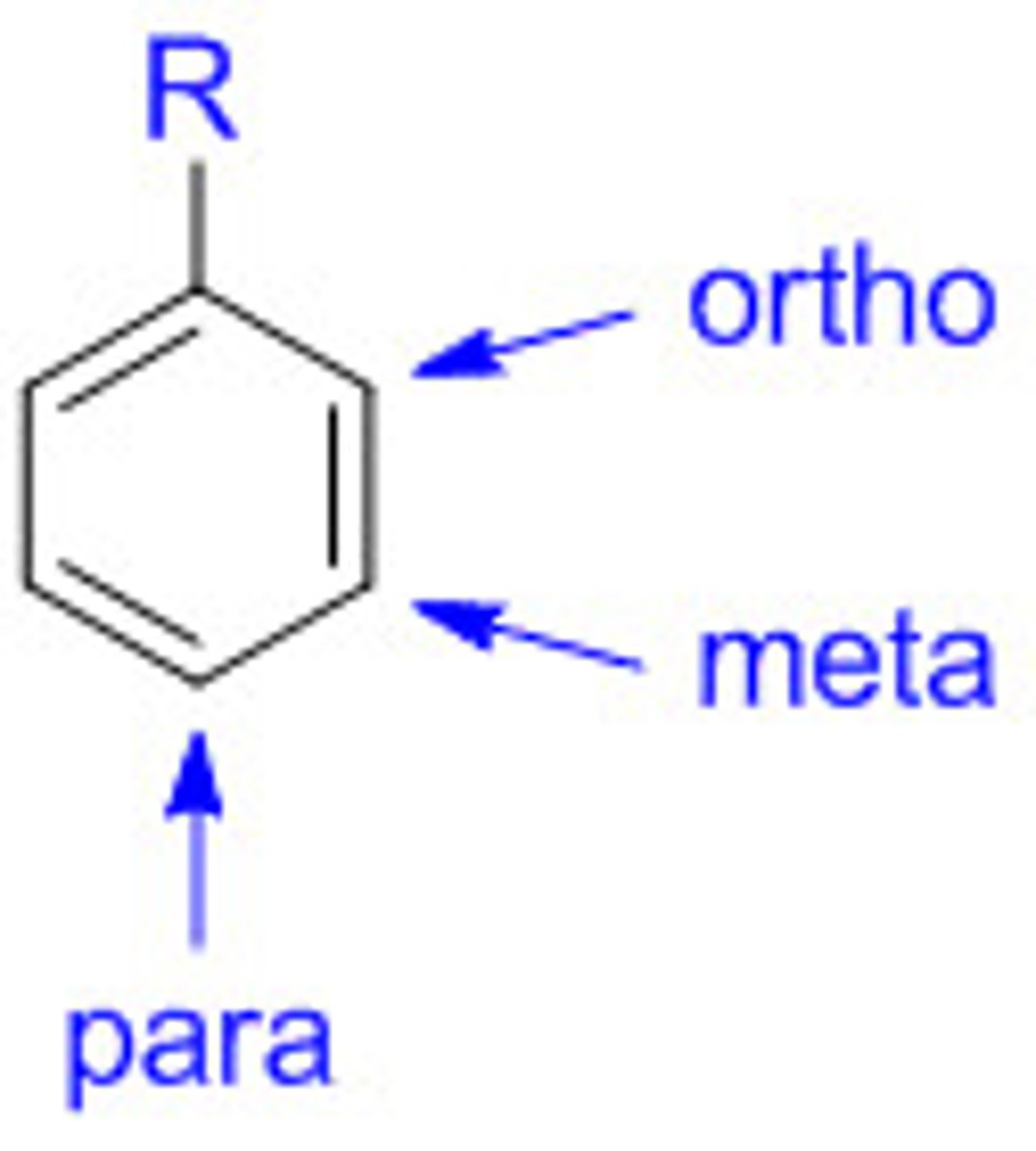
hydrogen bonding - characteristic of alcohols
increase mp
increase bp
increase solubility in H2O
PCC
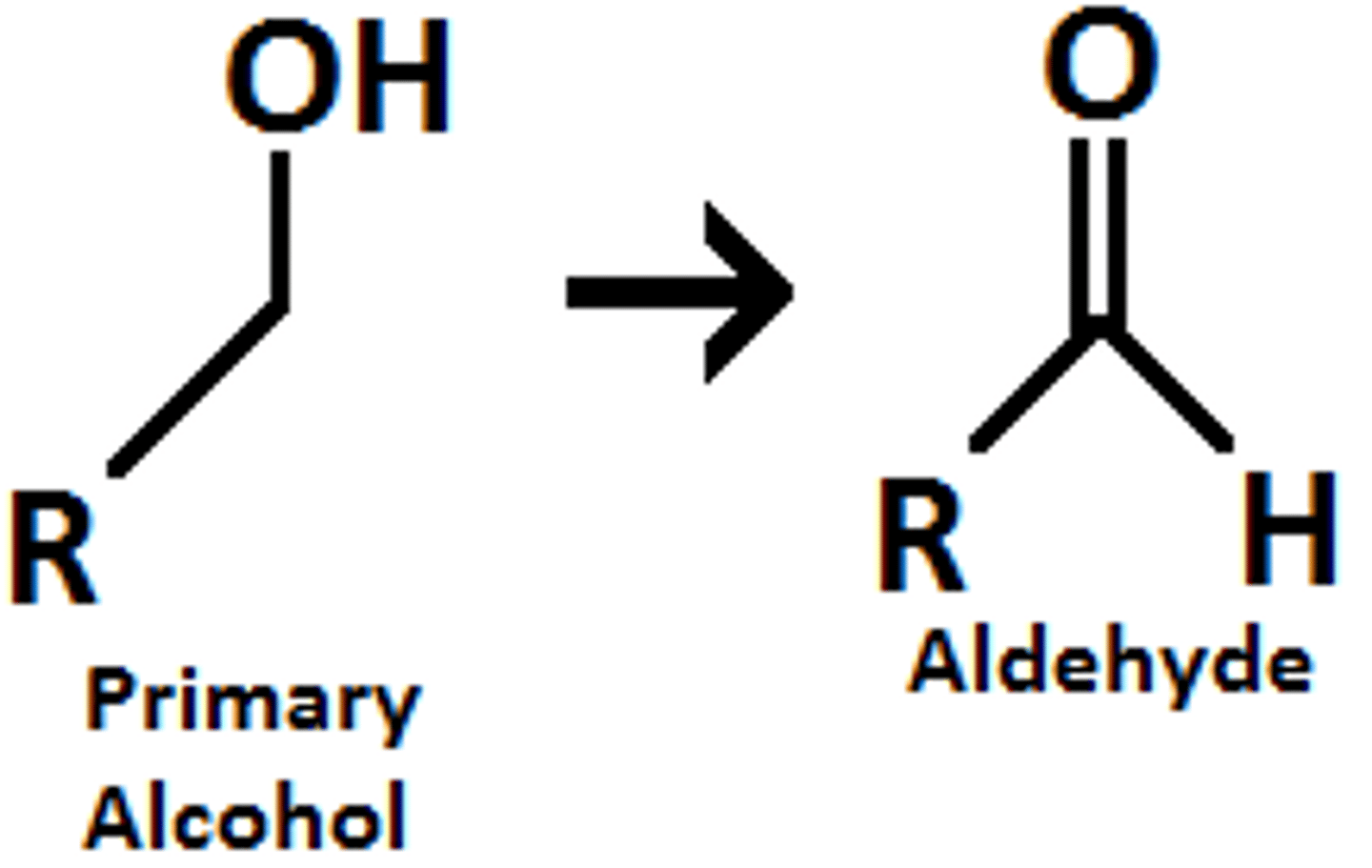
alkoxide anion
charges like to spread out as much as possible. Acidity decreases as more alkyl groups are attached b/c they are electron donating, which destabilizes the alkoxide anion
Resonance or electron withdrawing groups stabilize the alkoxide anion, making the alcohol more acidic
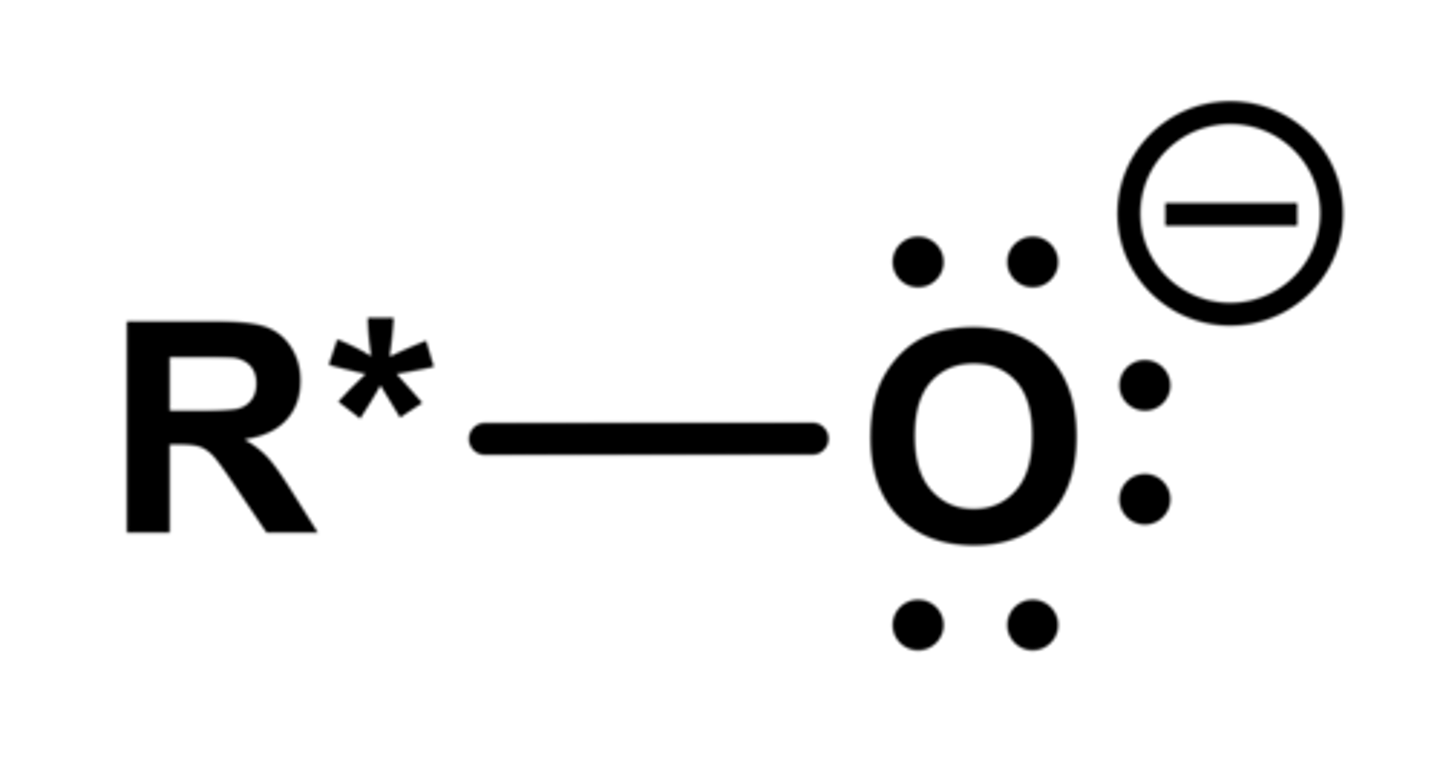
Quinones
-electron acceptor in ETC
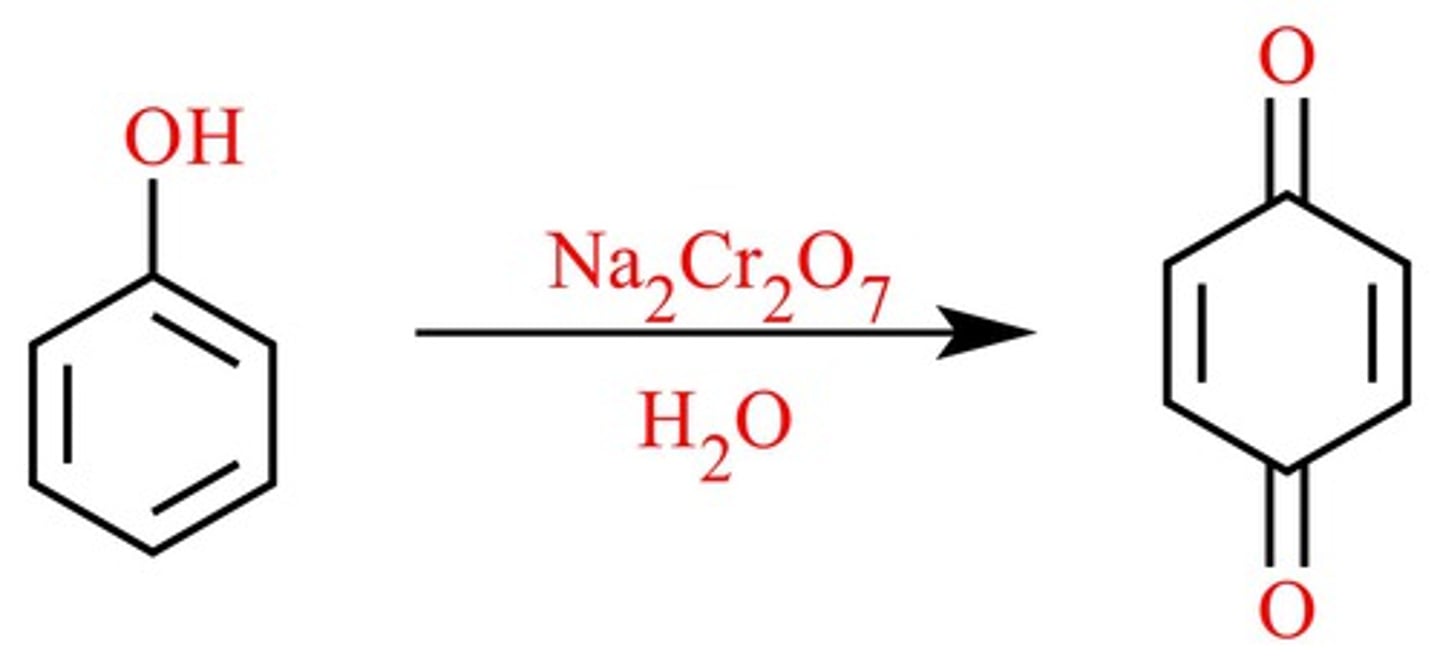
Hydroxyquinones
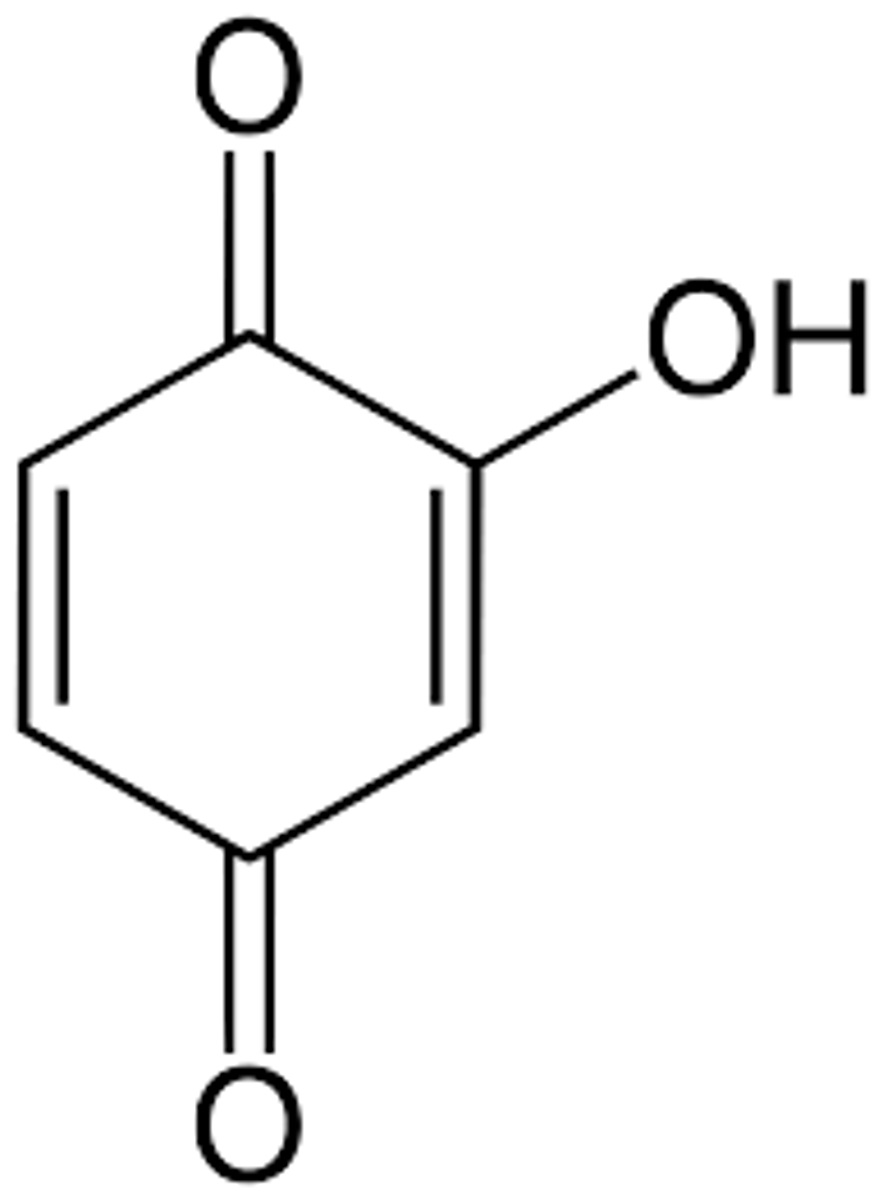
Ubiquinone (coenzyme Q)
-lipid soluble (b/c of long alkyl chain)
-electron carrier in ETC.
-Ubiquinol: reduced form (with -OH instead of C=O) when it picks e-
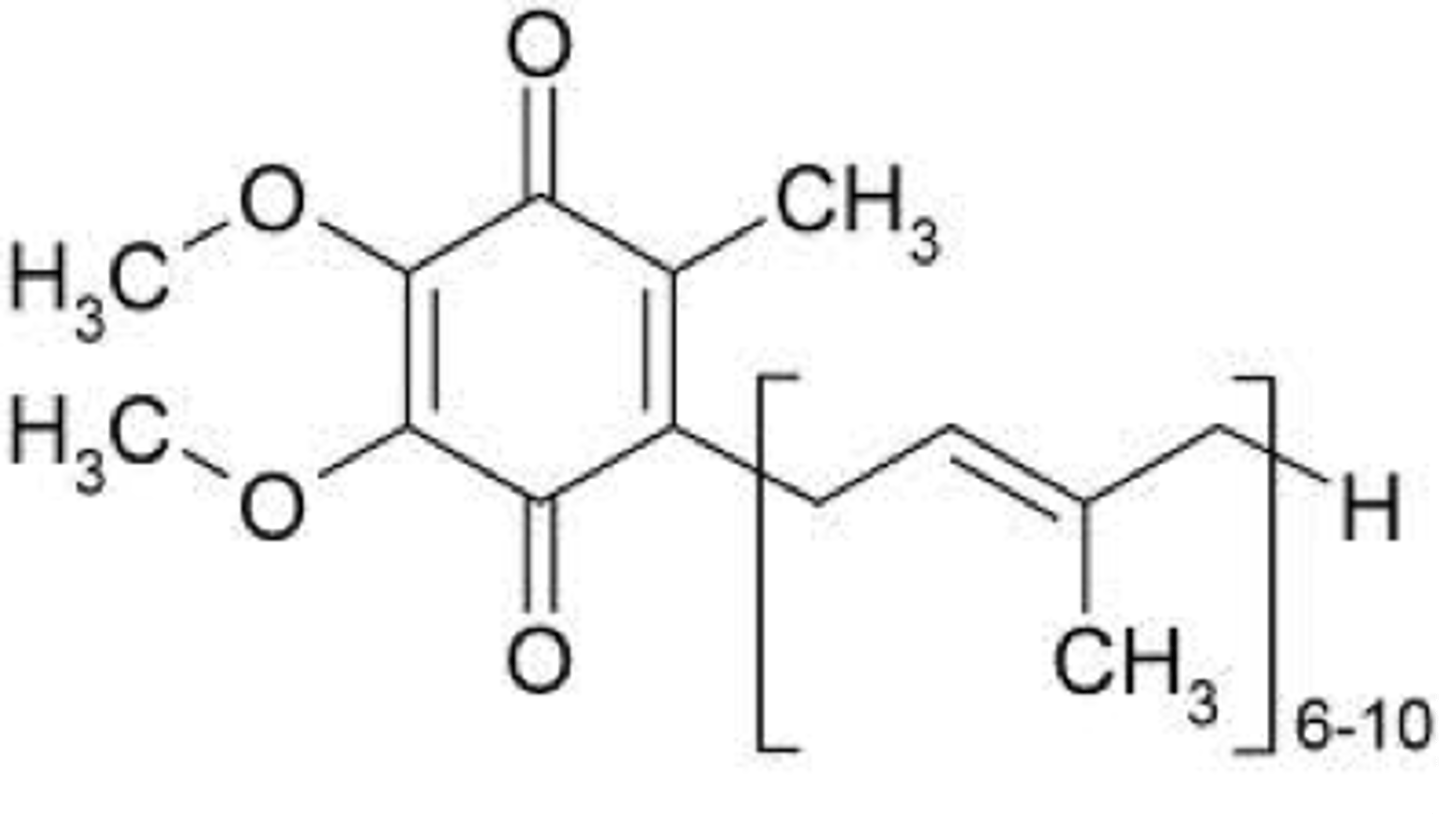
Ketone/Aldehyde physical property
- dipole of carbonyl is stronger of alcohol bc of C=O
- BP are elevated because of increased intermolecular attractions, less than OH's however bc no H-bonding
- act as electrophiles, good targets for nucleophiles: due to e-withdrawing properties of the carbonyl oxygen, leaves partial positive charge on Carbon
- aldehydes are usually more reactive toward nucleophiles bc less steric hindrance + fewer e-donating alkyl groups

Formation of aldehyde
- obtained from partial oxidation of a primary alcohol, only by PCC!
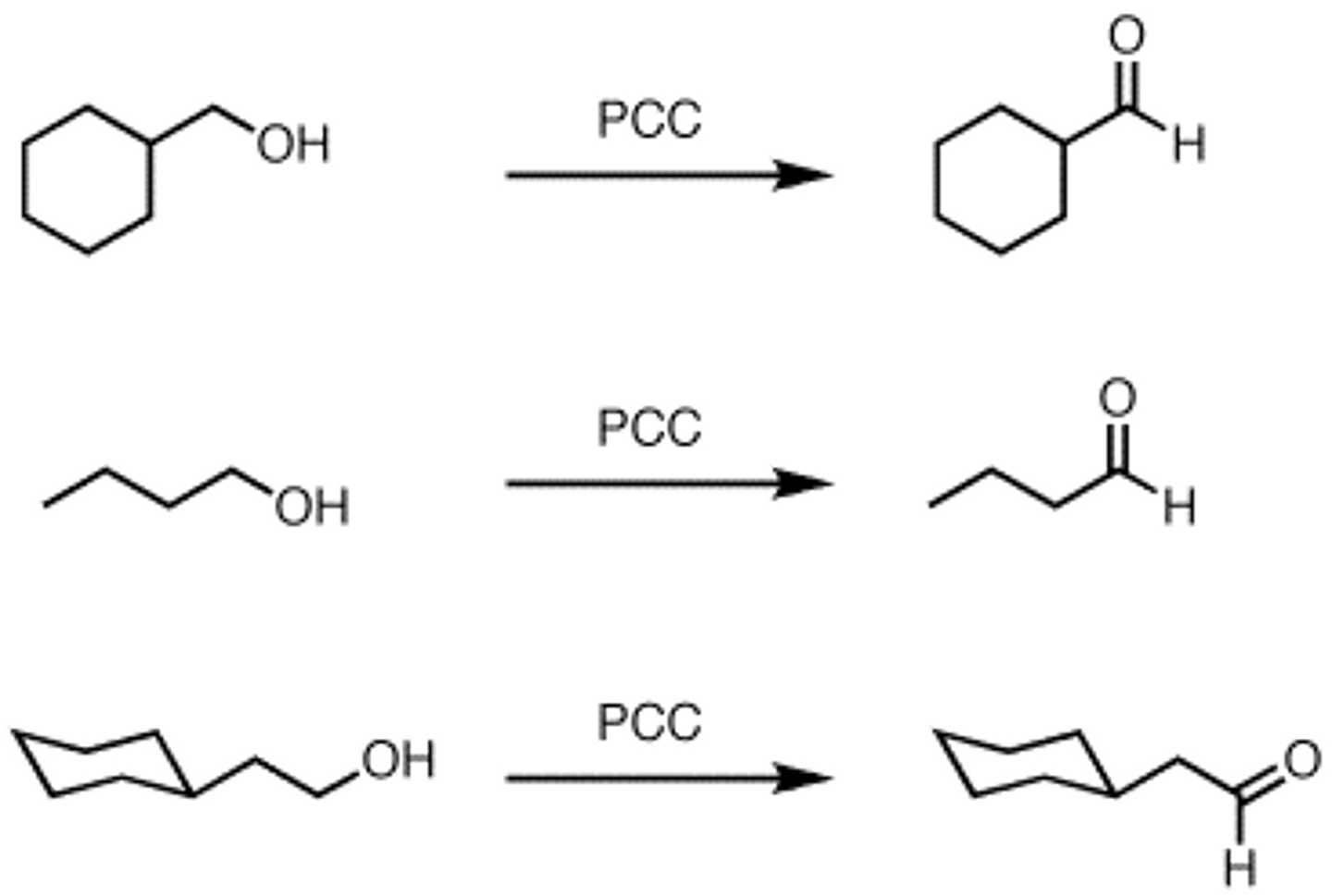
Formation of a ketone
- oxidation of a secondary alcohol
- Can use:
--> Na2Cr2O7
--> K2Cr2O7
--> CrO3
--> PCC
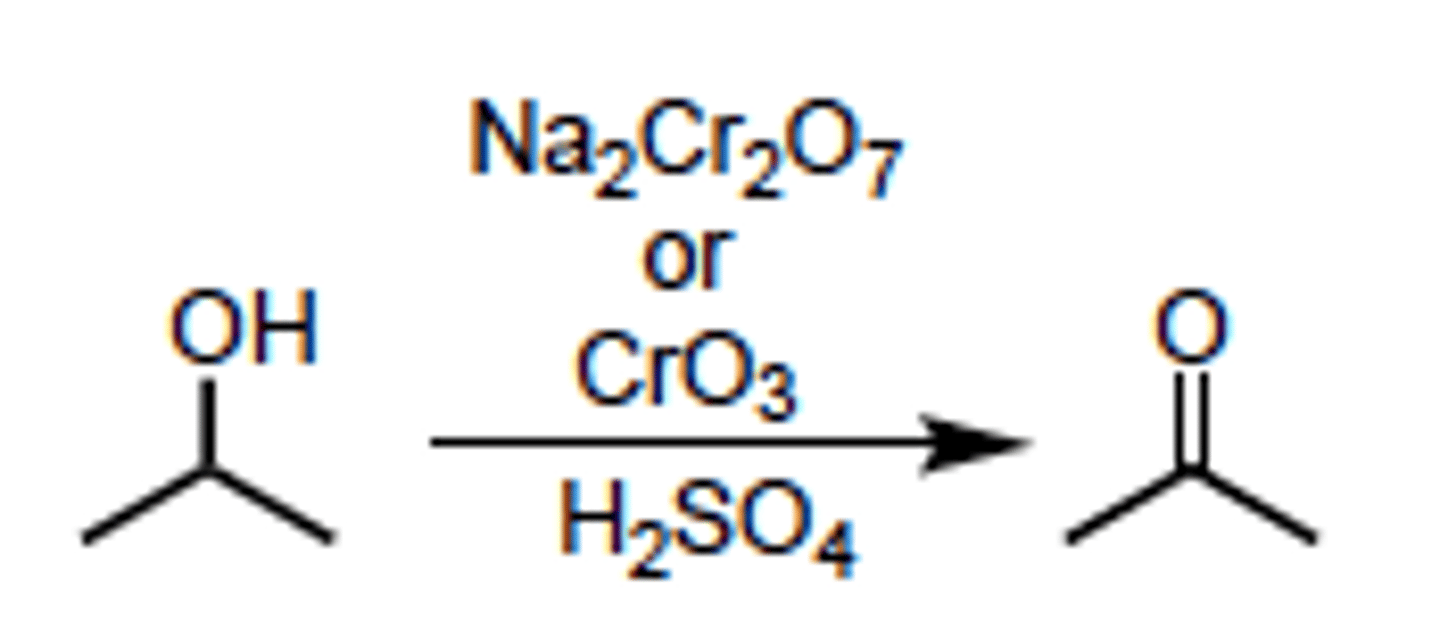
Hydration
- in presence of water, aldehydes + ketones react to form geminal diols
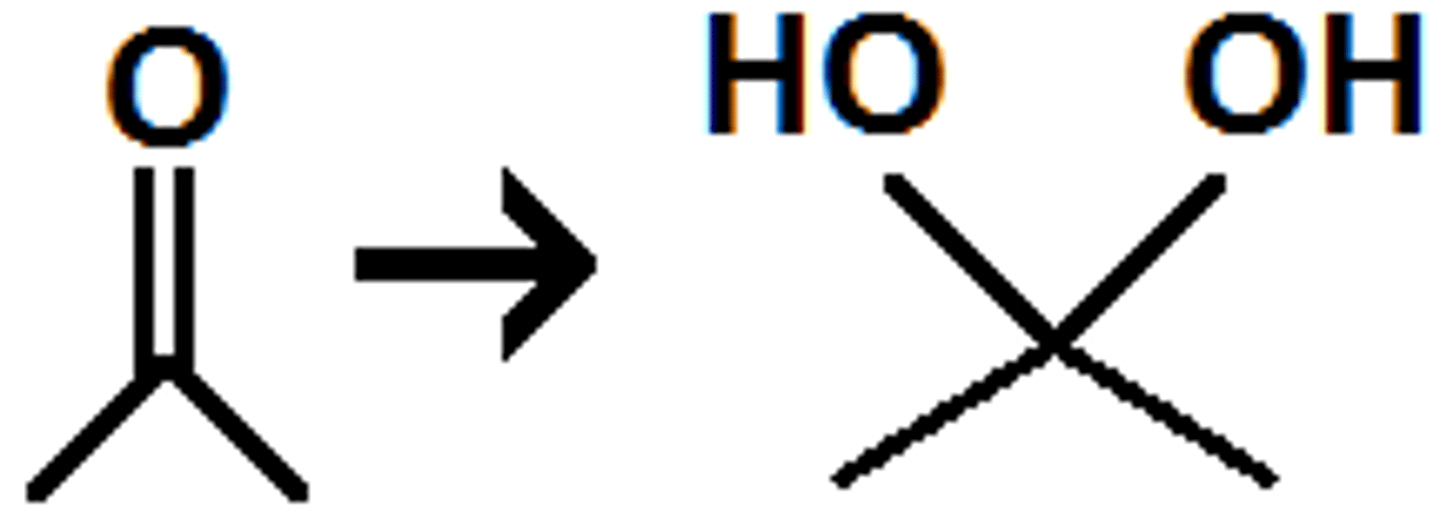
When an aldehyde or ketone is treated with 1 equivalent of an alcohol(Nu)
- product is a hemiacetal or hemiketal
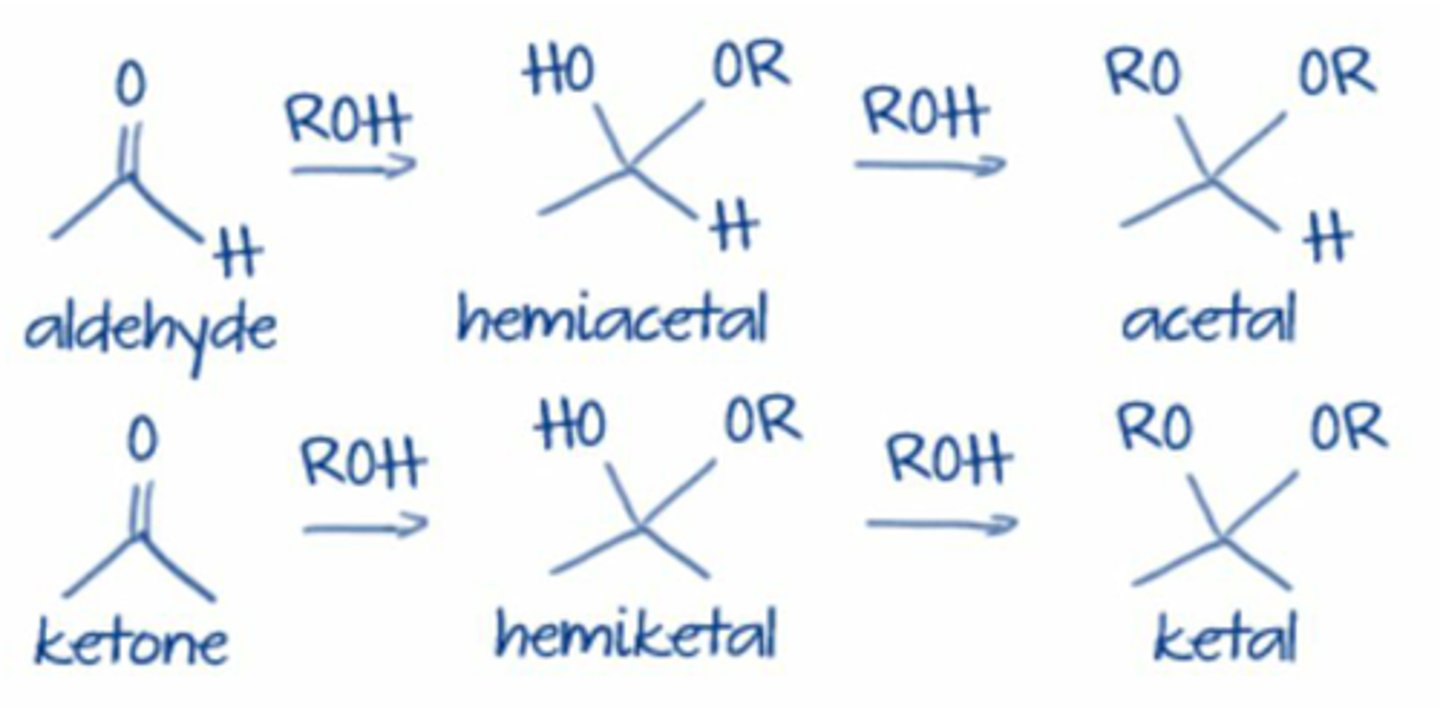
hemiacetal
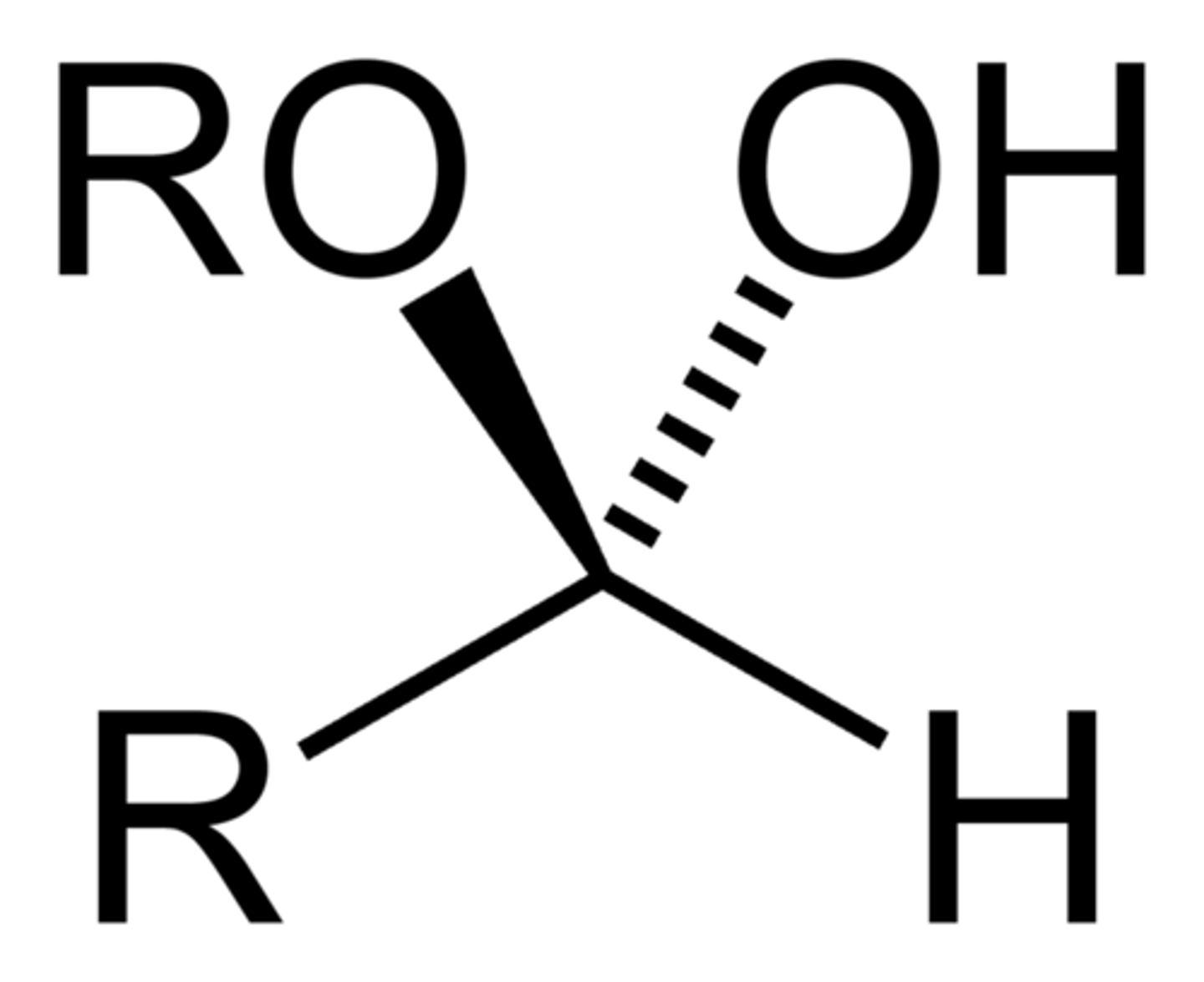
hemiketal
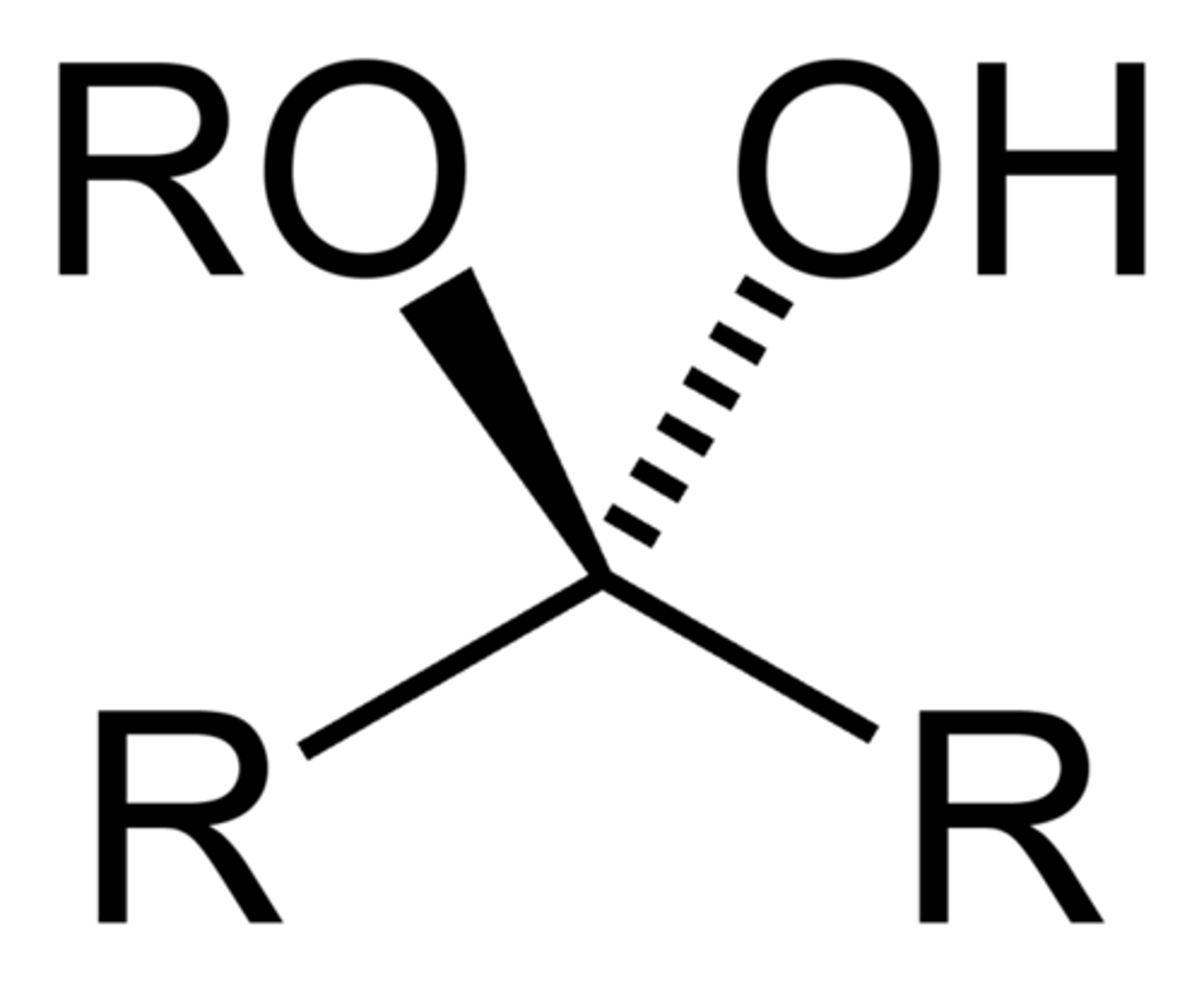
Hemiacetal Formation
- recognize by retention of -OH group
